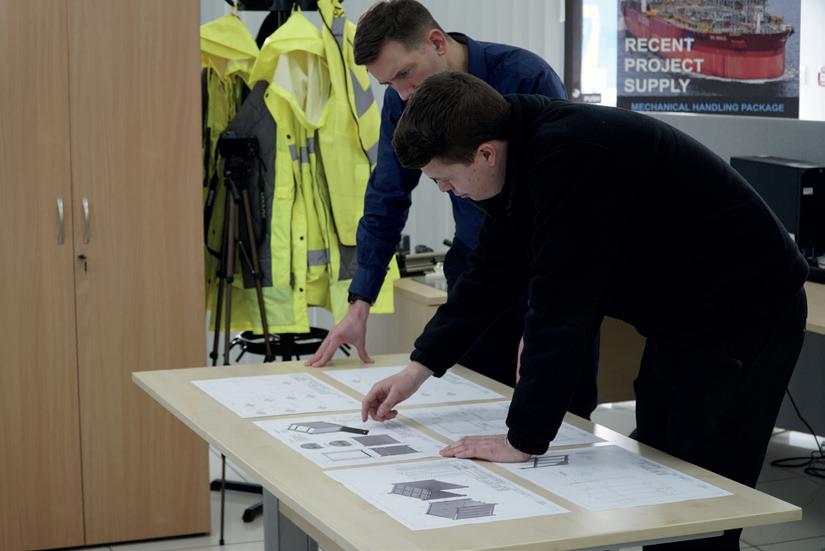DIGITAL TRANSFORMATION

Entering the Copilot eraa story of integration

GLOBAL ENERGY NEWS ENERGY PROJECTS MAP RISK MANAGEMENT LEGAL RENEWABLES CONTRACT AWARDS DECOMMISSIONING STATS & ANALYTICS EVENTS




Entering the Copilot eraa story of integration

GLOBAL ENERGY NEWS ENERGY PROJECTS MAP RISK MANAGEMENT LEGAL RENEWABLES CONTRACT AWARDS DECOMMISSIONING STATS & ANALYTICS EVENTS


AIVA™, E V’ s As set In sp ection Visua li zatio n and An a ly ti cs system revo lu tionizes data . By revealin g key i nf ormation about cond ition , status a nd perf or man ce , A IVA™ support s th e mana ge ment o f we ll s, pipe line s and othe r critical ener gy assets an d in fr astru ct ures .
AIVA™ is an all-in-one cloud-based platform that allows users to store, visualize and interact with a wide variety of logs and data types. A complete solution to integrate, manage and safeguard your data, instantly accessible from anywhere with internet access.
With the advanced PowerBI analytic tools of AIVA™ you can exploit your data to the fullest, resulting in faster, more complete answers and more effective decision-making.
•Safe, secure, 24/7 access for a wide range of data
•Advanced visualization and analytics functions
•Easy to deploy software as a service solution
•Highly scalable single source of truth
•Field-wide life-of-asset applications











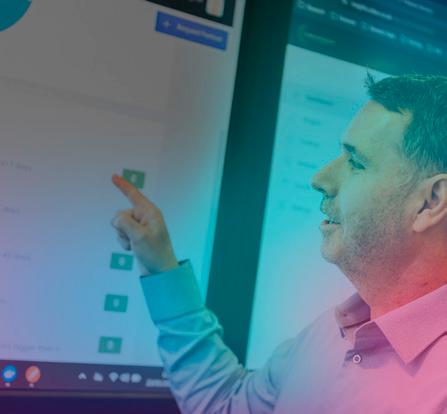

Welcome to the September issue of ‘OGV Energy Magazine’ where we explore the theme of Digital Transformation. A big thank you to our front cover partner Cegal, who introduce us to the biggest revolution to face the human race in decades, 'The Co-pilot era! Read about how this might affect all our daily lives on pages 4 & 5.

We are delighted to showcase other contributions in this months issue from CAN Group, Proserv, BrandSafway, Intervention Rentals, Elementz, IP/GN and Vysus. The rest of this month’s magazine as always provides you with a review of the Energy sector in the North Sea, Europe, Middle Eas and the USA along with articles from Brodies LLP and Leyton. Updated industry analysis and project updates from Westwood Global Energy Group, the EIC and Renewables UK.
We hope you enjoy this jam packed publication.
Warm regards, Dan
Hyland - Director

| by Mario Vaz Henriques Business Development Manager, Cegal
The IT and digital industry has seen several major revolutions that have significantly shaped the way we live and work. Some of the most impactful ones include the invention of the computer (1940s), the transistor and integrated circuits (1950s), personal computers (1970s), the internet and the World Wide Web (1990s), and mobile computing (2000s).
We are once again on the verge of a new revolution, and this one could affect us more than all the others combined. The result is something that no one can foresee, but it is already happening and will forever change the way we communicate, collaborate, and live. We are entering the era of Copilots.
Our personal assistants, or Copilots, will soon be integrated into every aspect of our daily lives. They will support us in virtually all of our activities, giving us capabilities that resemble having superpowers.
We are entering a thrilling phase of our existence, as humankind will soon become an interplanetary species. Within this decade, we expect (based on Elon Musk and SpaceX’s plans) the first human landing on Mars. This will require a lot of innovation in technology and human adaptability, and these superpowers will be critical. All of this will bring even more pressure to the energy sector.
To deal with the growing energy demand, particularly from technological advances like blockchain and AI in the last decade, the energy industry needs to boost its efficiency, reliability, and sustainability.

One of the main goals of the energy industry is to minimize its environmental impact and satisfy the rising demand for clean and renewable energy sources.
This is also very important for the AI sector, which depends on large amounts of data and computing power to train and deploy models that can improve various aspects of human activity.
To achieve this goal, the energy industry must update its infrastructure, processes, and policies to enable more efficient and sustainable energy production and distribution. Applying AI and machine learning is the only way to enhance energy forecasting, demand response, grid stability, fault detection, and maintenance. For instance, AI can help determine the optimal mix of energy sources, regulate the output of generators and batteries, and detect anomalies and failures in the grid.
The usage of AI and Copilots however, can and must also encourage innovation and collaboration across the energy sector and other stakeholders, including governments, regulators, consumers, and researchers, to foster a culture of continuous improvement and transformation. Examples could include creating incentives and standards for energy efficiency, carbon reduction, and, data and knowledge sharing.
This is a crucial step to boost innovation in this industry. By sharing data and knowledge, energy experts can utilize Copilots to gain superpowers, enabling them to uncover insights that were previously not visible. Advanced AI models, alongside their unique expertise, is the key to the next step.
When you begin using Microsoft 365 Copilot, you must keep in mind that the information that Copilot can return to the end user is, somewhat, limited. In most cases, the information that the user is looking for resides outside of the Microsoft 365 tenant.
by Mario Vaz Henriques | Business Development Manager, Cegal
Having an integration strategy is essential from the start, in order to identify where the crucial data location is, how sensitive this data is, and to develop a strategy to integrate these external data sources into Microsoft 365. For this reason, it is vital to comprehend Microsoft 365 Copilot plugins and Microsoft 365 Copilot connectors.
| Microsoft 365 Copilot plugins and Microsoft Graph
Microsoft 365 Copilot plugins are designed to extend the capabilities of the Copilot by connecting it to external data sources and applications. These plugins can be customized to meet the specific needs of an organization, allowing users to access and manipulate data from a variety of sources directly within the Microsoft 365 environment. A key component in this integration is Microsoft Graph, a powerful API that provides a unified programmability model to access data in Microsoft 365, Windows 10, and Enterprise Mobility and Security. By leveraging Microsoft Graph, organizations can ensure that their Copilot is equipped with the most relevant and up-to-date information, enhancing productivity and decision-making.
| Microsoft 365 Copilot Connectors and Microsoft Graph
Microsoft 365 Copilot connectors are pre-built integrations that enable seamless data flow between Microsoft 365 and other applications or services. These connectors facilitate the automatic synchronization of data, reducing the need for manual data entry and ensuring consistency across platforms. Using Microsoft Graph, these connectors can pull data from various services and integrate it within Microsoft 365, creating a cohesive ecosystem where information is readily accessible and actionable. By utilizing connectors, organizations can maximize the utility of their Microsoft 365 Copilot.
| Implementing
To fully realize the potential of Microsoft 365 Copilot, it is essential that organizations develop a comprehensive strategy that includes the following steps:
1. Identify Critical Data Sources
Determine which data sources are essential for your organization’s operations and decision-making processes.
2. Assess Data Sensitivity
Evaluate the sensitivity of your data to ensure that appropriate security measures are in place to protect it.
3. Integrate Data Sources
Use Microsoft 365 Copilot plugins and connectors, along with Microsoft Graph, to integrate these critical data sources into your Microsoft 365 environment.
4. Train Users
Educate your team on how to effectively use Copilot and the integrated data sources to enhance their productivity and efficiency.
5. Monitor and Optimize
Continuously monitor the performance of your Copilot integrations and make necessary adjustments to optimize their functionality.
| Conclusion
Personal assistants like Microsoft 365 Copilot marks the beginning of a new era in the IT and digital industry.
By strategically integrating critical data sources and leveraging the power of Copilot plugins, connectors, and Microsoft Graph, organizations can unlock unprecedented levels of efficiency and innovation.
As we stand on the brink of becoming an interplanetary species and witness revolutionary changes in the energy sector, the tools we adopt today will shape the future of how we live and work.







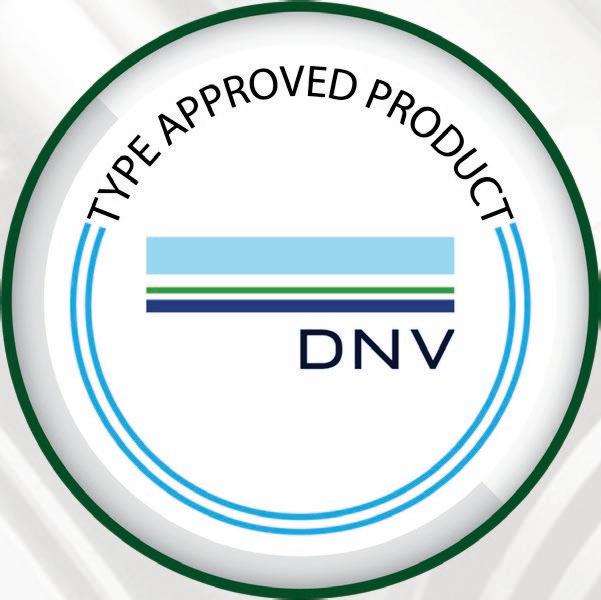















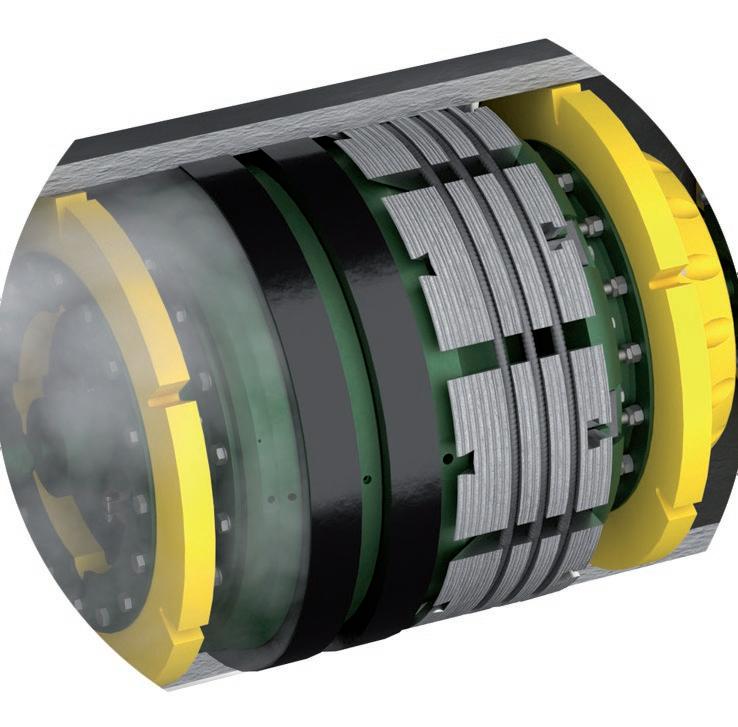

























Editorial
+44 (0)
Advertising
+44
Design
Editorial



























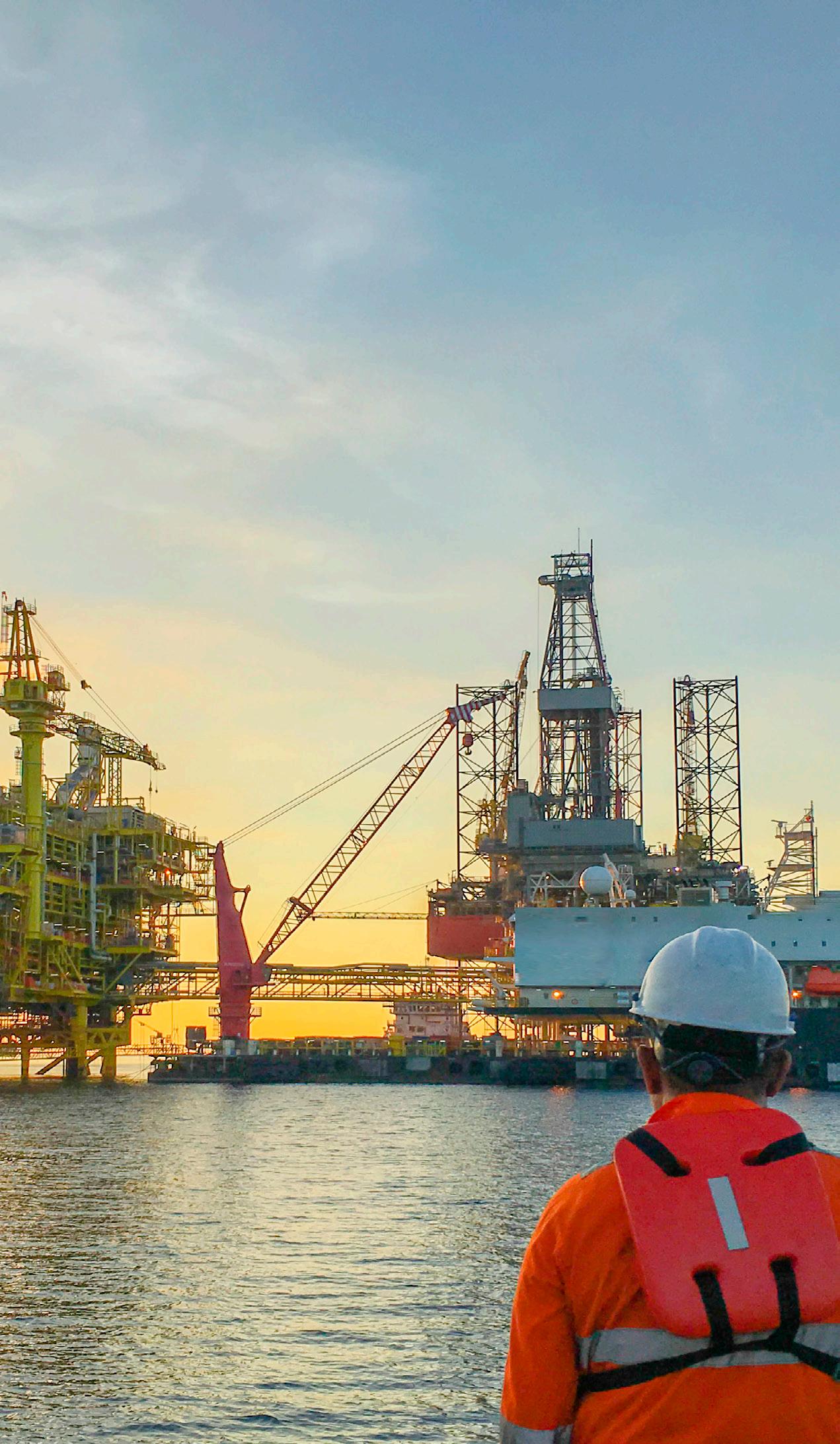






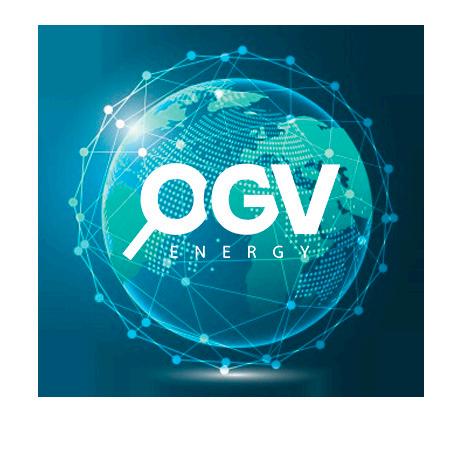


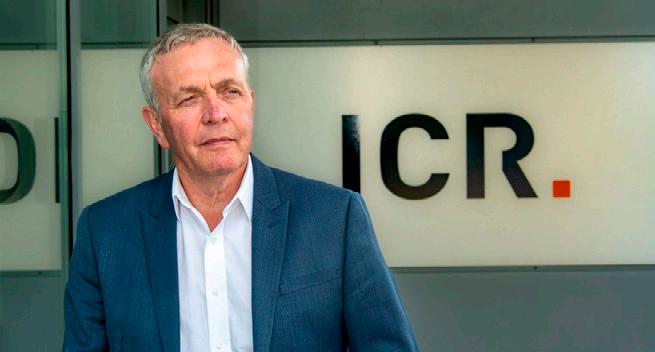
ICR Group shortlisted for two EIC National Awards 2024
ICR Group, a global leader in maintenance and integrity solutions, has been shortlisted in two categories at the prestigious Energy Industries Council (EIC) National Awards 2024.
The nominations, in the Culture and Environmental & Sustainability categories, recognise ICR's forward-thinking approach to workplace culture and its commitment to sustainable practices in the energy sector.
The culture nomination reflects ICR's dedication to fostering an inclusive, diverse, and supportive working environment, while simultaneously embedding strong Environmental, Social, and Governance (ESG) principles across the business.
Jim Beveridge, CEO at ICR Group, said: “These nominations validate our commitment to both culture and sustainability. Our team has worked tirelessly to develop technologies that not only deliver value to our clients but also support the global energy transition.”

Ashtead Technology expands Norway operation with new Stavanger hub
Ashtead Technology, a leading provider of subsea technology and services, has further invested in the Norwegian market by opening a new facility in Stavanger.
Norway's rich history of innovation in offshore energy presents significant opportunities for Ashtead Technology to enhance its service offerings for customers locally, building on strong foundations having previously supported the region remotely for many years.
The new facility serves as a strategic hub, initially offering a comprehensive suite of ROV tooling and subsea survey technology. Coupled with valuable local expertise and support, the new operation delivers faster response times for customers in the region.


COMET launches COMET
Companion: A six-figure investment in AI to boost user productivity and simplify workflows
Scottish tech firm COMET, formerly known as STC INSISO, is excited to announce the launch of COMET Companion, an AI-powered chatbot designed to make using the COMET platform easier and more efficient. Powered by OpenAI, this new feature provides live support to help users get the most out of the platform’s Incident Management, Investigations and RCA, and Supply Chain modules.
The COMET Suite COMET is a configurable set of intelligent data-driven tools supported by domain expertise for incident management, investigation, root cause analysis, audits & inspections, and supply chain assurance. COMET provides a consistent and structured approach, with integration to major EHS systems and AI enhancements that give users real risk intelligence to see what was previously unseen.

Hydro Group expand cable manufacturing capabilities by investing in state-of-the-art Bunching and Layup Machine
Hydro Group, a global leader in bespoke subsea connectivity solutions have invested further in their cable manufacturing facility with the acquisition of a new Bunching and Layup Machine.
The new machine will replace the old High Speed Twinner Quadder, enabling the business to increase capability by 50% in terms of number of components within each cable design and reduce lead times, whilst maintaining superior quality which is crucial to meet demand and satisfy customers. The machine can process up to six subcomponents, providing a maximum 20mm overall diameter and will assist to maximise efficiency within Hydro Group due to its ability to run lights-out and produce longer lengths.

VSA, the social care charity supporting the people of Aberdeen & North East Scotland, announces the official opening of a new sensory garden at its Linn Moor School facility, supported by Ithaca Energy. Ithaca Energy not only provided a five-figure sum to enable the complete renovation of the garden space, but 259 members of Ithaca’s team gifted 1,813 hours of volunteer time over a 12-month period transforming the space.
The sensory garden now features an outdoor education space, strawberry planter areas, specialist flora and fauna which support smell and touch, musical play and dedicated seating areas for the children to enjoy the outdoor space.

Aberdeen firm expands into four new cities with major acquisition
Aberdeen equipment rental specialist First Integrated Solutions has completed a major acquisition which will see it expand into four new cities and extend its services across multiple sectors.
The fast-growing firm has sealed a seven-figure deal to buy Tusk Lifting, which has depots in Middlesborough, Liverpool, Hull and Glasgow.
The combined business will have a turnover of nearly £20million and employ around 125 people across its five sites, serving a joint customer-base spanning the construction, manufacturing, oil and gas and renewable energy sectors.
Tusk Lifting has been acquired from parent firm Mammoet - part of the Dutch conglomerate SHV Holdings, which also owns retail chain Makro.


ModuSpec provides a combination of in-depth rig-technology inspection services coupled with operator-minded services to put the rig in the context of well operations.
Established by the founder and original senior management of the independent rig inspection company, who first introduced rig inspection services to the industry in 1986, it supports the upstream industry in drilling wells more safely and efficiently reducing non-productive time and establishing a safe work environment.
www.moduspec.com/

As the world leader in drilling waste management, we harness the power of today and pioneer the technology of tomorrow. Whether onshore or offshore, we turn waste into value and lost time into profit. But above all, we keep you turning.
www.twma.com

Established in 2023, Ramco Pipetech Holdings Limited (RPHL) is the holding group for Ramco Norway A/S, Ramco Pipetech Limited, and Ramco Pipe Care Limited. Operating across the UK and Norway, the group’s services encompass OCTG pipe management and specialist cleaning services to the energy and industrial sectors both on and offshore.
www.ramcopipetech.com

We are a casing technology company that provides you with safer and more efficient energy solutions from design through validation and manufacturing. We are designers, we are manufacturers, we are service providers.
www.newlandoiltools.com

Services, Inc. is a global upstream oil and gas services corporation that consists of four locations in the U.S., one in Aberdeen, Scotland, and two in Malaysia. From our humble beginnings in 1978 as a small but unique oilfield rental company, GSI has continually expanded and adapted to meet the needs of the ever-changing oil and gas industry. GSI offers unique solutions for the entire life cycle of the well–drilling, completions, production, well intervention, and P&A / decommissioning.

Innovex designs, manufactures, and installs mission-critical drilling & deployment, well construction, completion, production, and fishing & intervention solutions to support upstream onshore and offshore activities worldwide.

We are an Aberdeen-based valve maintenance and testing facility, providing the highest levels of expertise and service to ensure your probes are repaired and returned with minimum disruption to your operations. We have the facility to carry out a thorough test and inspection of your probes and have access to a robust supply chain should any replacement parts be required.
www.valvetec-services.com

We are specialists in hydraulic and electrical systems from design to manufacture and refurbishment.
With over 70 years’ combined experience in oil & gas / marine / petrochemical / industrial / renewables and infrastructure sectors, we provide product supply, design & manufacture. Specialised site services, system fault finding, hot oil flushing, instrument pipework installation and testing, as well as complete overhauls of all hydraulic and mechanical equipment.

At EV, we help well operators across the energy industry to identify, understand and resolve the most complex of wellbore issues.
At EV we operate in 36 countries across seven regional teams. Our global team of experts apply years of combined experience and cutting-edge technology to deliver detailed, distilled information that enables a better understanding of life of well challenges.

By Tsvetana Paraskova


The
UK’s government plans to further raise the energy profits levy, acquisitions of offshore portfolios, new drilling, and
a number of new contracts featured in the UK North Sea oil and gas industry in the past month.
The UK’s Chancellor of the Exchequer, Rachel Reeves, has confirmed plans for the Energy Profits Levy to be extended one year to 31 March 2030, have its investment allowances tightened, and to increase the rate of the levy by three percentage points to 38 percent from 1 November 2024.
A call for evidence confirming the government’s intention to take action on the carried interest loophole has also been published, as well as a commitment to update on policies at the Budget to help close the tax gap further, the UK government said.
The headline tax rate for the sector would rise to 78 percent, one of the world’s highest, while the EPL’s investment allowance will be removed and further reductions in capital allowances could be introduced.

Industry reacted to the plans for further increases in the so-called windfall tax, saying that the high tax rates would undermine investments in the UK offshore industry that could threaten the future energy security and net-zero investments.
“I hope the government do something sensible rather than cast a wrecking ball across the North Sea,” David Latin, chief executive of North Sea producer Serica Energy, said in response to the planned tax hike.
Offshore Energies UK chief executive David Whitehouse commented,
“This is not partnership working between government and industry. These announcements have been made without meaningful engagement with this sector.”
“The offshore energy sector supports over 200,000 jobs. These are real people, working in our energy industry. This announcement jeopardises jobs in communities across the UK. This is something the Prime Minister committed in his manifesto not to do,” Whitehouse said.
“Announcements like this without engagement is no way to treat these hard-working people.”
OEUK has also called on the government to now honour its pre-election promises to meet and discuss the way forward so the UK can achieve the homegrown energy transition, set out by the industry’s manifesto.
The industry remains concerned about the impact of wider proposals for a further windfall tax and an end to new oil and gas licences, OEUK said.
Offshore Energies UK has also said that the UK’s offshore energy industry is on-track to meet its own climate goals and is not slowing down. OEUK is leading calls to create the positive and stable investment environment needed to achieve a homegrown energy transition that everyone wants to see.
In 2022, the UK’s oil and gas sector reduced production emissions by 24 percent, halved flaring and venting, and cut methane emissions by 45 percent compared to 2018.
This means the sector achieved its interim target – a reduction of 10 percent by 2025 –three years early.
“Further emission reductions will be achieved with the help of major capital projects, like carbon capture, floating wind and hydrogen,” OEUK’s Whitehouse said.
The North Sea Transition Authority (NSTA) said in its latest UKCS Decommissioning Cost and Performance Update 2024 that the North Sea oil and gas industry is forecast to spend £24 billion on decommissioning between 2023 and 2032.
This is £3 billion higher compared with the forecast for the same period in last year’s report. More than half of the overall estimate of £40 billion (in constant 2021 prices) is to be spent during this 10-year period, which shows near-term actions will set the direction for the sector, NSTA said.
Hundreds of wells will need to be decommissioned every year as more oil and gas fields shut down. However, operators only achieved 70 percent of planned well decommissioning activities last year, the regulator warned.
The industry must take action on well decommissioning to support the UK’s supply chain, clean up their oil and gas legacy, and stop costs spiralling, NSTA noted.
“With spending forecast to peak at £2.5bn per year in the current decade, decommissioning can ensure that the UK’s world-leading supply chain is equipped to help operators clean up their oil and gas infrastructure over the next 50 years and support the carbon storage sector, which will rely on many of the same resources,” said Pauline Innes, the NSTA’s Supply Chain and Decommissioning Director.
“I am concerned that this huge opportunity to safeguard highly-skilled jobs and support the transition will be wasted if operators fail to tackle their well decommissioning backlogs. The supply chain wants to do this work, but it is not physically tied to the UK,” Innes said.
“Its skills and resources are in demand in other regions, and we are starting to see companies


marketing their rigs elsewhere. Operators need to use the supply chain, now, or risk losing it.”
In a separate report, NSTA said that top-quality environmental, social, and governance (ESG) disclosure is crucial to attracting further investment into the UK’s oil and gas industry.
Many of the 29 licensees analysed by the NSTA are following good practice across key areas of ESG reporting and are on the right track, though there is still plenty of room for improvement.
“ESG reporting is no longer a ‘nice to have’ extra, it is crucial to attracting and maintaining investment. The principle of ‘No ESG disclosure, no access to finance’ is truer now than ever before,” Joanne Edgeler, Head of Licensee Governance and ESG, said.
A report by the National Engineering Policy Centre found the UK would need additional baseload power, and new nuclear plants will not be ready in time.
Harbour Energy, the biggest producer in the UKCS, said in its half-year results report that it had made significant progress towards completing the Wintershall Dea acquisition, which is now expected early in the fourth quarter of the year.
“The acquisition will transform the scale, geographical diversity and longevity of our portfolio and strengthen our capital structure enabling us to deliver enhanced shareholder returns over the long run while also positioning us for further opportunities,” CEO Linda Cook said.
“Policy will need
to
ensure
that short-term signals do not encourage existing gas-fired capacity to close down while still needed, extending the life of some, where possible.”
SLB has been awarded an integrated engineering, procurement, construction and installation (EPCI) contract by bp to its OneSubsea joint venture and Subsea7 for the Murlach development (formerly Skua field), 240 kilometres east of Aberdeen in the UK North Sea.
The Murlach project will include the first-ever implementation of SLB OneSubsea standard, configurable vertical monobore tree systems in the UK North Sea, which will be deployed by Subsea7 via vessel to reduce rig days.
“The government’s commitment for a strategic reserve of unabated gas capacity is therefore a crucial aspect of ensuring security of supply,” the report says.
“Policy will need to ensure that short-term signals do not encourage existing gas-fired capacity to close down while still needed, extending the life of some, where possible.”
In company news, independent UK firm Viaro Energy signed an agreement to take over Shell and ExxonMobil’s UK Southern North Sea assets. Under the terms of the deal, Viaro Energy will assume full ownership of one of the largest and longest producing gas asset portfolios in the UKCS, including high-quality, well-maintained production facilities and the Bacton gas receiving terminal.
Pending regulatory approval, Viaro will buy a portfolio consisting of 11 operated offshore assets and one exploration field (Shamrock; Caravel; Corvette; Brigantine; Leman; Galleon; Skiff; Carrack Main, Cutter, Carrack East; Barque; and Clipper), all tying back to the Shell-operated onshore Bacton Gas Processing Terminal via the Leman and Clipper fields.
The deal more than doubles Viaro’s producing portfolio and reaffirms long-term commitment to UKCS North Sea, thanks to access to producing operated fields, where 2023 production was equal to about 5 percent of UK total gas production, and to significant growth potential through identified near field exploration opportunities.
Shell U.K. Ltd, the operator of Licence P2437, has informed its project partner Deltic Energy Plc that drilling operations on the Selene exploration well have commenced. The Valaris 123 drilling unit is carrying out the drilling operations, which are planned to last approximately 90 days.
Independent energy group Parkmead announced that further to the provisional award of three blocks as part of the 33rd UK offshore licensing round, the P2634 licence has now been formally awarded to Parkmead by the NSTA. The licence is situated in the Outer Moray Firth. Parkmead as operator with a 50-percent interest, together with its joint venture partner Orcadian Energy with 50 percent interest, will use the expertise gained in developing challenging crudes to work towards commercialisation of Fynn Beauly, one of the UK’s largest undeveloped discoveries. This heavy oil accumulation has been proven by three wells and is estimated to contain oil-in-place of between 740 million and 1.33 billion barrels, Parkmead said.
Aberdeen-headquartered Proserv has successfully completed a sponsor-backed management buyout (MBO), and is introducing an employee ownership scheme.
Led by CEO Davis Larssen and CFO Mark Fraser, the multi-million pound deal was backed by GIIL, a UK-based investment vehicle of Glenn Inniss, the founder and owner of the GII Finance Group.
“Mark and I are thrilled to embark on this new chapter with GIIL’s strategic alignment as we progress on our journey to becoming the energy sector’s leading independent controls technology partner of choice,” Proserv CEO Davis Larssen said.
“We currently have approximately 50% market share in providing leading-edge subsea control systems in the North Sea and the Gulf of Mexico.”
Engineering and services company Kent has been awarded a global three-year enterprise framework agreement by Shell to provide Commissioning and Start-Up Services (CSU) across various onshore and offshore projects. The contract encompasses a wide range of energy sectors, including oil, gas, and new energy initiatives.

By Tsvetana Paraskova

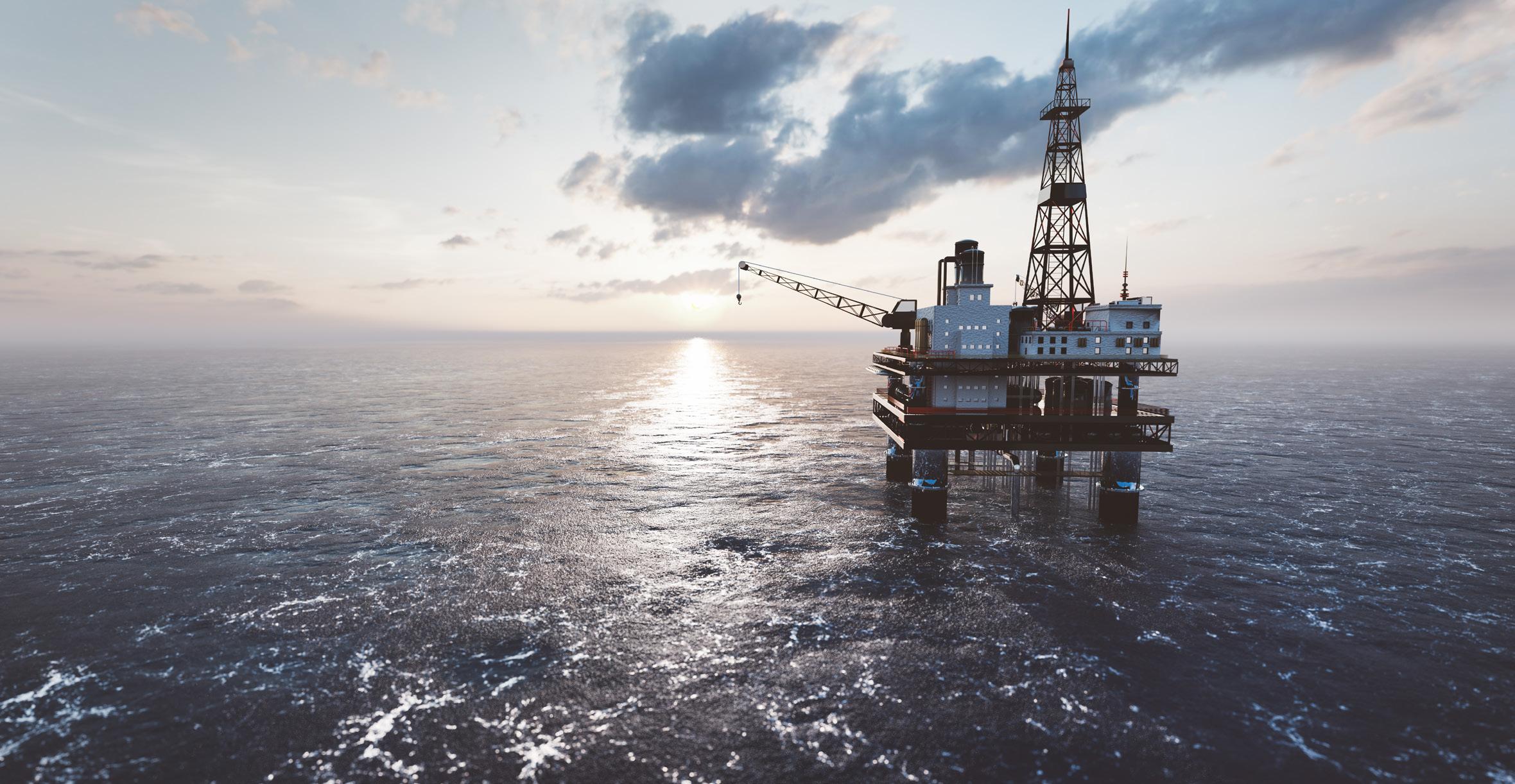
European oil and gas resources, the pledge of the new UK government to materially boost renewables capacity installations, and numerous deals in solar, wind, hydro, and hydrogen across Europe were the highlights in the European energy sector this past month.
Canadian company Tenaz Energy said it had entered into an agreement with Nederlandse Aardolie Maatschappij B.V. (NAM), a 50/50 joint venture between Shell and ExxonMobil, to acquire all of the issued and outstanding shares of NAM Offshore B.V., which
operates in the Dutch North Sea. The base consideration for the deal is 165 million euros ($246 million), prior to closing adjustments and contingent payments. The acquired assets include substantially all of NAM’s offshore exploration and production business, including associated pipeline infrastructure and onshore processing in the Netherlands.
Italian engineering group Saipem has been awarded a contract to ensure the supervision and the subsea intervention services of the GreenStream pipeline throughout the offshore and onshore sections at the Mellitah terminal in Libya and the terminal at Gela in Sicily, Italy.
The new contract, awarded by GreenStream BV, merges the activities that Saipem has been undertaking for GreenStream since 2008 as to asset integrity, inspection, maintenance, and emergency pipeline services, and expands them to cover a wider range of scenarios and customer’s needs.
“With this award Saipem will contribute to managing the integrity of a fundamental underwater infrastructure for the Italian energy supply with an integrated approach, thus confirming the company’s leadership in the underwater domain with promptly available and efficient solutions,” the Italian company said.
bp has completed its acquisition of Germany’s GETEC ENERGIE GmbH, a supplier of energy to commercial and industrial (C&I) customers in Germany.
The acquisition will accelerate the growth of bp’s European gas and power presence, as well as providing opportunities to grow
integrated lower carbon energy solutions for C&I energy customers in Germany and elsewhere in Europe.
Currently, GETEC ENERGIE supplies around 40 TWh of power and gas per year – serving about 400 C&I customers in Germany and supplying over 100,000 gas and power meters directly.
Led by Cord Wiesner, the chief executive officer of GETEC ENERGIE GmbH, the company will join bp trading & shipping, as part of the international gas & power trading business.
The UK government introduced a Bill to set up Great British Energy, a publicly owned clean power company headquartered in Scotland, which will help accelerate investment in renewable energy such as offshore wind.
“Legislation will be brought forward to help the country achieve energy independence and unlock investment in energy infrastructure,” His Majesty said in his Speech to both Houses of Parliament.
The industry welcomed the measures in the King’s Speech to boost renewables.
“It is particularly welcome to see the announcement of a Planning and Infrastructure Bill, to ensure that essential infrastructure can be deployed without delay,” RenewableUK’s Executive Director of Policy Ana Musat said.


According to RenewableUK, it is essential to get the framework for GB Energy right so that the UK can secure the maximum amount of private capital.
UK Prime Minister Keir Starmer and Energy Secretary Ed Miliband have announced the first major partnership between Great British Energy and The Crown Estate to unleash billions of investment in clean power.
The UK’s Climate Change Committee (CCC) has assessed that only a third of the emissions reductions required to achieve the country’s 2030 target are currently covered by credible plans, and the UK is currently off track for Net Zero.
“The country’s 2030 emissions reduction target is at risk. The new Government has an opportunity to course-correct, but it will need to be done as a matter of urgency to make up for lost time. They are off to a good start,” said Professor Piers Forster, interim Chair of the Climate Change Committee.
“Action needs to extend beyond electricity, with rapid progress needed on electric cars, heat pumps and tree planting.”
A few weeks after taking office, the new UK government announced that the budget for this year’s renewable energy auction is being increased by £500 million to over £1.5 billiona record-high budget. The funding is expected to help build new green infrastructure as part of the mission to deliver clean power by 2030.
The budget for this year includes £1.1 billion for offshore wind – the backbone of the UK’s clean energy mission – which has more budget available than all of the previous auctions combined, sending a strong signal to industry to invest in UK waters, the government said.
The raised budget will unlock more investment in renewable energy projects in the UK, RenewableUK said.
While the industry association welcomed the budget boost, it said that “This auction will not unlock investment in all shovel-ready projects, so the Government will need to ensure that the next auction rounds focus on project delivery to ensure we achieve the Prime Minister's clean power mission and increase the confidence of investors in the UK's supply chain.”
The UK offshore sector’s leading trade body, Offshore Energies UK, has warned that the goal of net zero power must be delivered by building on the UK’s existing industrial strengths, creating jobs and growing domestic companies – not simply by importing the technology and skills from other countries.
A report commissioned by OEUK offered a new blueprint mapping out how the UK can meet the new government target of net zero power by 2030.
“It will require a herculean effort by government, regulators and industry working together to deliver change to UK infrastructure on a scale unseen since the industrial revolution,” OEUK
Chief Executive David Whitehouse said.
The British Hydropower Association and Scottish Renewables have urged the UK Government to support the deployment of long-duration electricity storage (LDES), including pumped storage hydro (PSH).
In a letter to Ed Miliband, the Secretary of State for Energy Security and Net Zero, Ian Murray, the Secretary of State for Scotland, and Jo Stevens, the Secretary of State for Wales, the associations call for a ‘cap and floor’ mechanism to accelerate investment and demonstrate a “step-change” in decisionmaking. The UK has a pipeline of more than 9 gigawatts (GW) including several ‘shovel ready’ projects, but inaction has been costing consumers.
“As a well-established technology with a multigigawatt pipeline and several ‘shovel ready’ projects, Pumped Storage Hydro is a key technology to smoothly integrate the increase in generation we require, help reduce system costs and deliver huge economic benefits across the country,” said Claire Mack, Chief Executive of Scottish Renewables.
In company news, Macquarie Asset Management has announced that it intends to acquire, via its managed funds, an additional 39.25-percent stake in the Lynn and Inner Dowsing offshore wind farms off the coast of Lincolnshire from funds managed by BlackRock.
Operational since 2009, the adjacent offshore wind farms have a combined installed capacity of approximately 194 MW and generate enough electricity to power the equivalent of more than 160,000 UK homes each year.
Gilkes Energy and SSE said they plan to progress a new pumped storage hydropower scheme at Loch Fearna in Scotland’s Great Glen. The Fearna Pumped Storage Hydro (PSH) project, located at the western end of Glengarry around 25 km west of Invergarry, envisages the development of tunnels and a new power station connecting SSE Renewables’ existing reservoir at Loch Quoich with an upper reservoir at Loch Fearna.
The proposed development would be up to 1.8 GW in generating capacity and capable of producing around 37 GWh of stored energy capacity. This makes it, alongside the Earba project, one of the two largest PSH developments in the UK in terms of installed capacity and energy stored.
Wood Consulting said it had played a key role in securing more than 1 billion euros of funding for its clients in Europe, enabling three major clean energy projects to reach final investment decisions (FID).
Wood’s team of technical consultants served as Lenders’ Technical Advisors in advancing Lithuania’s largest onshore wind farm.
Wood’s expertise was also key in facilitating European renewables developer Renewable Power Capital (RPC) in finalising financing
for its 553 MW onshore wind portfolio in Sweden, and acted as owner's engineer for the Catalina green hydrogen project, a first-ofits-kind project in Spain, which will combine 1.5 G of wind and solar energy to power a 500MW electrolyser to produce green hydrogen.
Repsol and EDF Renewables have reached an exclusivity agreement to join forces for future offshore wind tenders in Spain and Portugal, considering the significant growth opportunities in the Iberian Peninsula.
In Norway, Kitemill said it had received 2.5 million euros from the European Innovation Council (EIC) to fast-track the commercialization of its Airborne Wind Energy (AWE) technology.
“Our technology has now been accepted and approved by the EU through three separate funding rounds. This tranche will help derisk a critical phase for the KM2 and boost customer and public trust,” CEO Thomas Hårklau commented.
Battery storage developer Harmony Energy is set to deliver France’s largest battery energy storage system (BESS)—the Cheviré battery project – using Tesla Megapack technology. The project will mark a significant milestone for the French energy system, being France's first large-scale 2-hour battery.
Located in Nantes Saint-Nazaire Harbour, the 100 MW / 200 MWh large-scale renewable energy infrastructure will utilise Tesla Megapack and Autobidder technology and will provide enough electricity to power an estimated 170,000 homes for two hours – greater than the population of the City of Nantes.
France’s TotalEnergies has signed agreements with German renewable developer RWE to buy a 50-percent stake in OranjeWind, a 795 MW offshore wind farm under development in the Netherlands. TotalEnergies will dedicate its share of the renewable electricity production from this project to power 350 MW electrolyzer projects.
The European Commission has approved, under EU State aid rules, a 998- million euro Dutch scheme to support the production of renewable hydrogen. The scheme will support the construction of at least 200 MW of electrolysis capacity. The aid will be awarded through a competitive bidding process this year, with the tender open to projects with a capacity of at least 0.5 MW.
Onshore wave energy technology company Eco Wave Power Global AB officially launched works on its first MW-scale wave energy project, which will be located in the city of Porto, in Portugal.
The first MW project is being executed as part of a 20 MW Concession Agreement and will feature a first-of-its-kind underwater wave energy museum.

By Tsvetana Paraskova

Mergers and acquisitions in the US oil and gas industry continued their momentum in the second quarter as pressure grew on some producers to boost scale and production to compete with peers.
While US oil production is set to grow at a slower pace this year compared to the previous two years, while well costs are falling amid increasing efficiency, which is also driving a decline in upstream employment numbers in the top oil-producing state, Texas.
In politics, the US presidential race changed months ahead of the vote in November, with President Joe Biden dropping out and Vice President Kamala Harris becoming the Democratic nominee to run in the election.
Bipartisan legislation was introduced in July, aiming to strengthen US energy security by accelerating the permitting process for critical energy and mineral projects of all types in the United States.
In the second quarter of 2024, upstream mergers and acquisitions activity booked its third consecutive quarter of heightened value with more than $30 billion transacted, Enverus Intelligence Research (EIR) said in its latest M&A report.
The second-quarter tally brings year-to-date activity, including July deals, to nearly $90 billion and nearly $250 billion transacted in the last 12 months. Prior to the latest run of consolidation, quarterly M&A value had only topped $30 billion three times since the start of 2017, Enverus noted.
The biggest deal of the second quarter was ConocoPhillips’ announcement that it would buy Marathon Oil Corporation in an all-stock transaction with an enterprise value of $22.5 billion, inclusive of $5.4 billion of net debt.
Despite heightened scrutiny and additional requests for information from the US Federal Trade Commission (FTC), ConocoPhillips expects to close the deal in late 2024.
The deal, the fifth largest US upstream transaction of the last decade, contributed a lot to the overall Q2 M&A value.
The acquisition marks another historic name exiting the E&P space as Marathon Oil has roots that reach back more than 100 years. Unlike most other big deals in the current consolidation cycle that focused entirely on the Permian Basin, Marathon Oil held a diversified asset base that included Permian exposure along with large positions in the Eagle Ford and Williston Basin, Enverus notes.
“M&A momentum carried into the second quarter as pressure built on companies like ConocoPhillips, Devon Energy and SM Energy, that had previously stayed out of the market to keep pace with peers and grow in scale,” said Andrew Dittmar, principal analyst at EIR.
Due to high prices for prime Permian acreage, US exploration and production companies are now looking at mid-tier inventory and positions outside the Permian, notably in the Eagle Ford and Williston basins, according to Enverus.



Firms are also looking for opportunities to expand their inventory base by testing new zones such as SM Energy buying XCL Resources to gain access to Utah’s underdeveloped Uinta Basin.
“Proving up new economic drilling locations is a top priority for companies and has been the most cost-effective way to extend inventory life,” said Dittmar.
“What is substantially different in this market, and a major shift in the industry, is that companies like Matador Resources and SM Energy are willing to prepay for inventory in deals that has yet to be fully proven up by horizontal wells.”
will realize additional efficiency gains and keep costs lower,” said Nemeth.
“Smaller producers will be most exposed to inflation headwinds — arguably motivating even more M&A activity in the region.”
Texas Upstream Employment Continues To Drop
"Mergers and acquisitions in the US oil and gas industry continued their momentum in the second quarter as pressure grew on some producers to boost scale and production to compete with peers."
Upstream oil and gas employment in Texas fell again in June, with a decline of 2,000 jobs compared to May, the Texas Oil & Gas Association (TXOGA) said in a cautionary note at the end of July, after newly released data from the Texas Workforce Commission indicated that the job count had dropped in 5 out of 6 months this year.
Energy and Natural Resources Committee, thoughtfully considering input from our colleagues on both sides of the aisle, and engaging in good faith negotiations, Ranking Member Barrasso and I have put together a commonsense, bipartisan piece of legislation that will speed up permitting and provide more certainty for all types of energy and mineral projects without bypassing important protections for our environment and impacted communities,” Manchin said.
“For far too long, Washington’s disastrous permitting system has shackled American energy production and punished families in Wyoming and across our country. Congress must step in and fix this process,” said Ranking Member Barrasso.
“Our bipartisan bill secures future access to oil and gas resources on federal lands and waters.”
In addition, private equity firms are capitalizing on the higher prices to sell portfolio companies, according to Enverus’ analysis.
While oil deals have been booming, natural gas transactions have been subdued because of low gas prices.
However, a potential rally in natural gas prices towards the end of 2024 and into 2025 “could generate a wave of deals as long-dated private equity investments rush to market,” Enverus said.
US well costs peaked in 2023 and are now set for a 10-percent drop this year as efficiency gains and lower prices for piping products, proppant, and diesel have combined to push costs down, Wood Mackenzie said in a report in July.
Still, further reduction will be difficult in the current pricing environment, as oilfield equipment and services companies (OSF) seek to keep margins high, the consultancy said.
Additional well cost cuts must come from even higher efficiency gains as the oilfield services providers are unlikely to reduce pricing, said Nathan Nemeth, principal analyst for Wood Mackenzie.
WoodMac’s analysts expect an additional 40 rigs will be active relative to current levels by the end for 2025, led by gas plays and the Permian basin.
However, faster drilling operations mute the need for more rigs and Wood Mackenzie estimates that a 5-percent improvement in drilling efficiency equates to about 28 fewer rigs needed in the market.
“The largest producers with the scale to commit to longer-term contracts (one to three years) for new equipment and technologies
March 2024 was the only month in which the Texas upstream industry saw job gains in the first half of the year.
Commenting on the latest jobs data from the Texas Workforce Commission, TXOGA president Todd Staples said in a statement,
“Operational efficiencies are driving strong production with fewer rigs, which can translate to declining industry job numbers. Baker Hughes data indicate the national rig count has declined 14 percent from 687 in June 2023 to 588 active rigs in June 2024.”
At the same time, the US Energy Information Administration estimates rig productivity gains in excess of 20 percent year-overyear across major shale basins, with many companies maintaining or increasing production despite running fewer rigs.
“These productivity gains result in big benefits for consumers as prices have remained relatively stable despite geopolitical unrest,” TXOGA’s Staples noted.
At the end of July, US Senators Joe Manchin (I-WV) and John Barrasso (R-WY), Chairman and Ranking Member of the Senate Energy and Natural Resources Committee, released the Energy Permitting Reform Act of 2024— bipartisan legislation aimed at strengthening American energy security by accelerating the permitting process for critical energy and mineral projects of all types in the United States.
“After over a year of holding hearings in the Senate
Added Barrasso,
“This legislation is an urgent and important first step towards improving our nation’s broken permitting process.”
The American Petroleum Institute (API), the biggest US oil and gas industry association, welcomed the proposed bipartisan legislation as a step to a more transparent and consistent permitting process.
“This legislation not only takes tangible steps toward a more transparent, consistent and timely permitting process, but also ends the administration’s misguided LNG export permit pause, strengthening American energy leadership while helping to reduce emissions worldwide,” said API Executive Vice President and Chief Advocacy Officer Amanda Eversole.
“We applaud Senators Manchin and Barrasso for renewing bipartisan efforts to build the infrastructure needed for today and the future, and we call on Congress to take up this urgent priority.”



By Tsvetana Paraskova
the cuts, met on 1 August for a regular meeting to assess conformity and the situation on the oil market.

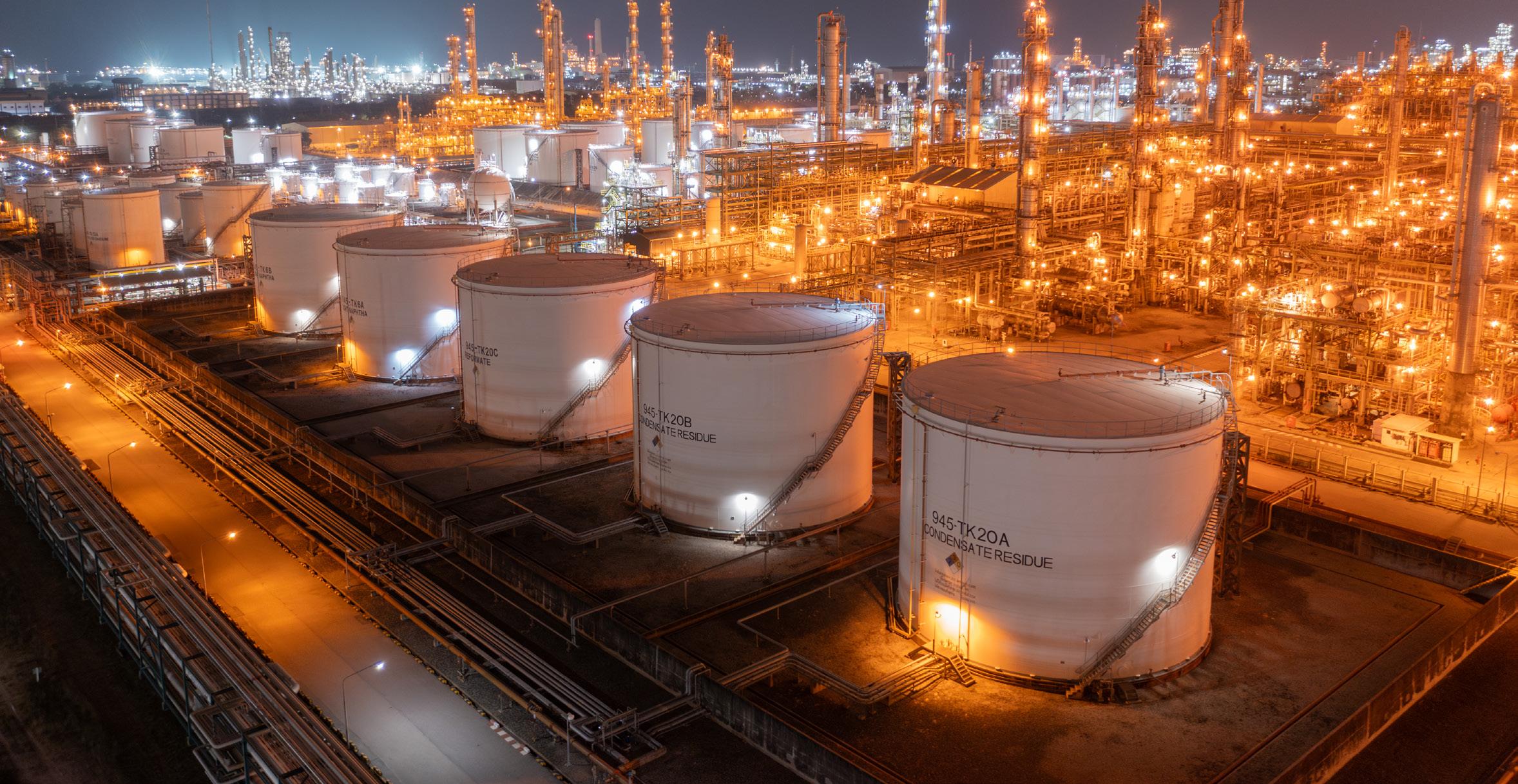
OPEC+ left its oil production policy unchanged, for now, while producers lagging in compliance with the ongoing output cuts pledged to improve their conformity rates and compensate for previous overproduction
JMMC reviewed the crude oil production data for the months of May and June 2024 and noted the high overall conformity for participating OPEC and non-OPEC countries of the Declaration of Cooperation (DoC), OPEC said.
At the end of July, the OPEC Secretariat said that it had received compensation plans from Iraq, Kazakhstan, and Russia for their overproduced volumes for January to June 2024.
The cumulative overproduction in these six months was about 1.184 million barrels per day (bpd) for Iraq, 620,000 bpd for Kazakhstan, and 480,000 bpd for Russia, OPEC said.
At the JMMC meeting in early August, the producers that had expressed intentions to begin easing the cuts in the fourth quarter “reiterated that the gradual phase-out of the voluntary reduction of oil production could be paused or reversed, depending on prevailing market conditions,” OPEC said.
JMMC did not recommend any changes to current policy, but noted that it retains the authority to convene additional meetings or to request an OPEC and non-OPEC Ministerial Meeting.
Saudi Aramco, the world’s largest oil company by both production and market capitalization, reported a net income of $29.1 billion for the second quarter of 2024, down by 3.4 percent compared to the same quarter last year, as Saudi Arabia is reducing its crude oil production as part of the OPEC+ deal and adding an additional voluntary cut of 1 million barrels per day (bpd).
Aramco, which aims to focus on maximizing shareholder returns, declared a base dividend of 76.1 billion Saudi riyals ($20.3 billion) and the fifth distribution of performancelinked dividends of 40.4 billion Saudi riyals ($10.8 billion). This brings the total declared dividends for the second quarter to 116.5 billion Saudi riyals ($31.1 billion).
The company said in its earnings release that it remains confident in its forecasts for medium- and long-term oil demand growth.
In addition, Aramco has progressed several natural gas developments to support its strategy of increasing gas production by more than 60 percent by 2030, compared to 2021, subject to domestic demand.

Saudi oil giant Aramco reported lower secondquarter profits as it continues to restrict production, while it raised $6 billion from a new bond issuance, weeks after a secondary share sale raised more than $12 billion for the Kingdom of Saudi Arabia.
Aramco, as well as the other major national oil companies from the Middle East, have signed several major agreements to develop oil, natural gas, and low-carbon energy projects.
OPEC+ Leaves Oil Production Policy Unchanged
The Joint Ministerial Monitoring Committee (JMMC), the OPEC+ panel monitoring oil market developments and compliance with
The next meeting of the JMMC is scheduled for 2 October 2024.
Russian Deputy Prime Minister Alexander Novak has said that there is no discord between Russia and OPEC+ over Moscow’s recent poor compliance with the group’s production cuts.
Russia’s Energy Ministry said at the end of July that the country remains fully committed to the OPEC+ agreement. Russia exceeded production volumes in June, but output has declined in each month since April, per estimates from independent sources approved by the agreement, the ministry said.
Saudi Aramco Earnings Drop on Lower Output
Design, procurement, and construction activities continued at the Jafurah Gas Plant, part of the Jafurah unconventional gas field development. Phase one is expected to commence production in 2025 and phase two is underway. Production from the Jafurah gas development is expected to reach a sustainable sales gas rate of 2.0 bscfd by 2030, in addition to significant volumes of ethane, NGL, and condensate.
Commenting on the second-quarter milestones for Aramco, president and CEO Amin Nasser said,
“We have also continued to create and deliver both value and growth, as demonstrated by the positive investor response to the Government’s secondary public offering of Aramco shares and our recent $6.0 billion bond issuance.”
Continued Nasser,
“Building on these strengths, we also made significant progress in key strategic areas
during the second quarter — from advancing our gas program and expanding our new energies portfolio, to partnering with leading car manufacturers on lower-emission vehicle technologies and growing our global retail network.”
Aramco has also recently signed definitive agreements to buy a 50-percent equity interest in the Jubail-based Blue Hydrogen Industrial Gases Company (BHIG), a whollyowned subsidiary of Air Products Qudra (APQ). The transaction, which is subject to standard closing conditions, will also include options for Aramco to offtake hydrogen and nitrogen.
Aramco expects its investment in BHIG will contribute to the development of a lowercarbon hydrogen network in Saudi Arabia’s Eastern Province, serving both domestic and regional customers. Upon completion of the transaction, Aramco and APQ, a joint venture between Air Products and Qudra Energy, are expected to each own a 50-percent stake in BHIG.
Italy’s engineering group Saipem said it had been awarded two offshore projects in Saudi Arabia, under the existing LongTerm Agreement (LTA) with Saudi Aramco. The overall amount of the two projects is approximately $500 million.
Saipem’s scope of work under the first project involves the Engineering, Procurement, Construction and Installation (EPCI) of a crude trunkline of approximately 50 km for the Abu Safa Field, while the activities related to the second project involve the production maintenance programs of the Berri and Manifa fields.
ADNOC, the national oil company of the United Arab Emirates, signed in early August a longterm Heads of Agreement (LNG agreement) with Osaka Gas, one of the largest utility companies in Japan, for the delivery of up to 0.8 million metric tonnes per annum (mmtpa) of liquefied natural gas.
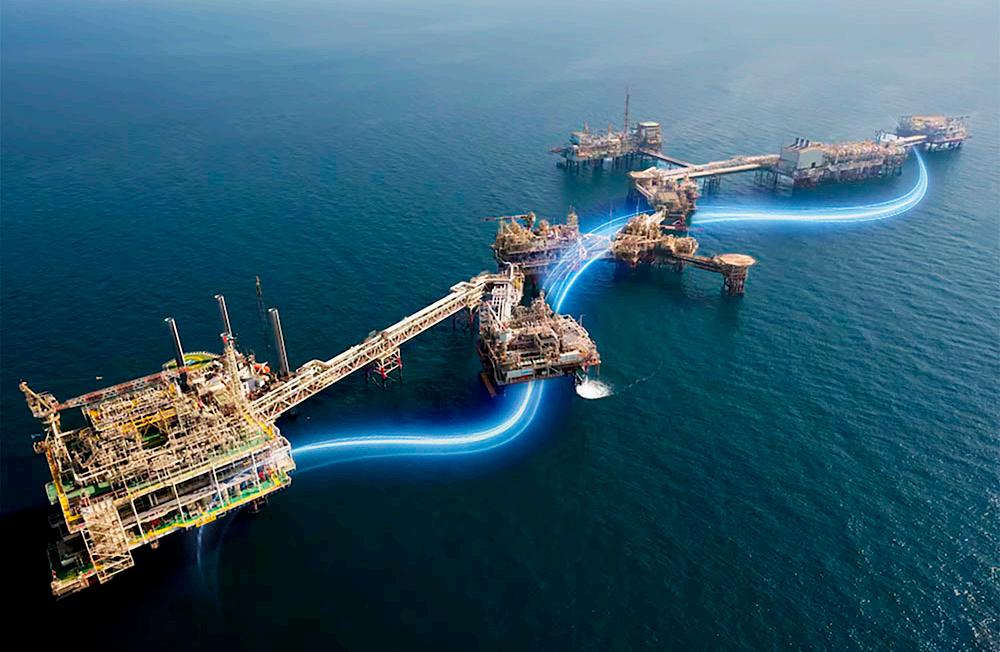
The LNG will primarily be sourced from ADNOC’s lower-carbon Ruwais LNG project, which is currently under development in Al Ruwais Industrial City, Abu Dhabi, and is expected to start commercial operations in 2028. Under the agreement, LNG cargoes will be shipped to the destination ports of Osaka Gas and its Singapore-based subsidiary, Osaka Gas Energy Supply and Trading Pte. Ltd. (OGEST).
ADNOC has also deployed RoboWell, AIQ’s artificial intelligence (AI) autonomous wellcontrol solution, in its operations at the offshore NASR field.
RoboWell uses cloud-based AI algorithms to autonomously operate wells that selfadjust according to changing conditions. This enhances the safe operation of the well, improves efficiency, reduces the need for travel and physical interventions, and so minimizes emissions, ADNOC says.
In another AI-enabled digital operation, the Abu Dhabi giant said that its offshore Satah Al Razboot (SARB) field had achieved a 25-percent increase in production capacity through the implementation of advanced digital technologies. The increase at SARB
field, to a total of 140,000 bpd, supports ADNOC’s target to increase its production capacity to 5 million barrels of oil per day by 2027.
“AI and digitalization are at the heart of ADNOC’s smart growth strategy to help responsibly meet the world’s growing energy demand,” said Abdulmunim Saif Al Kindy, ADNOC Upstream Executive Director.
Qatar’s state firm QatarEnergy is expanding operations outside the tiny Gulf nation by signing an agreement with Chevron to acquire a 20-percent working interest in a production sharing contract for block 5 offshore Suriname. Pursuant to the signed agreement, Chevron, as the operator, will retain a 40-percent interest, while Paradise Oil Company, an affiliate of Suriname’s national oil company “Staatsolie”, will own the remaining 40 percent.
“This agreement highlights our continued commitment to exploring the promising basins of Suriname and marks an exciting new partnership with Chevron in the international upstream sector,” said Saad Sherida Al-Kaabi, the Minister of State for Energy Affairs and the President and CEO of QatarEnergy.

Wellpro Group & Omega Well Intervention provide a complete Thru Tubing, Inflatable Packer & Well Intervention portfolio including operational design, project management, service, rental & sales.



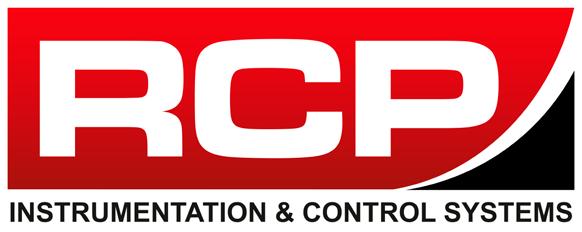


The new RMS is designed to give operators a clear, unambiguous overview of critical drilling and mud data processes. The system has been developed by RCP to greatly improve how information is presented using the latest industrial technologies and user-friendly interfaces
The RCP EDR offers a quick and cost-effective solution for clients considering a new installation or a partial upgrade to their existing drilling instrumentation systems Our highly experienced engineers and software developers allows us to tailor each new system to meet your exact needs meaning that you do not pay for functionality you will never use
The RCP EDR utilizes a variety of sensing technologies to monitor the drilling processes, (typically: Level, Pressure, Height, Temperature and Flow). Sensor output signals are received by the distributed I/O racks and are then processed by the EDR.
Processed information is then transmitted through network communication modules to each of the user interfaces including remotely networked PC’s and local HMI’s System and operator interface communications may utilize either: Fibre-Optic, Profinet, Profibus or Industrial Ethernet connection



Brent Oil Column September 2024

1 YEAR AGO

1 Year Ago - $95.20
Hedge funds were piling into the oil market, betting that prices would soon pass the $100 a barrel mark, adding impetus to a rally sparked by production and export cuts from Saudi Arabia and Russia. Riyadh’s extension of cuts until December pushed Moscow to limit exports which saw prices at a fresh high for the year.

5 YEARS AGO
5 Years Ago - $68.66
Oil prices experienced their biggest jump in around 30 years when two attacks on Saudi Arabian facilities knocked out around 5% of global supply. Brent crude initially surged 20% at the start of trading but eased back to the $69 a barrel mark. The drone attacks hit the world’s biggest petroleum-processing facility and a nearby oil field, both operated by Aramco.

10 YEARS AGO
10 Years Ago - $99.53


Brent saw a small rise on the prospect of an OPEC production cut and news that Libya had curbed output after rockets hit an area near a refinery. OPEC Secretary General Abdallah El-Badri told reporters he expected to lower its oil output target to 29.5 million barrels per day (bpd) from 30 million bpd the following year.



SPONSORED BY

www.eicdatastream.the-eic.com
Energy projects and business intelligence in the energy sector
The EIC delivers high-value market intelligence through its online energy project database, and via a global network of staff to provide qualified regional insight. Along with practical assistance and facilitation services, the EIC’s access to information keeps members one step ahead of the competition in a demanding global marketplace.
The EIC is the leading Trade Association providing dedicated services to help members understand, identify and pursue business opportunities globally.
It is renowned for excellence in the provision of services that unlock opportunities for its members, helping the supply chain to win business across the globe.
The EIC provides one of the most comprehensive sources of energy projects and business intelligence in the energy sector today.












Wood has been awarded a contract from Rosetti Marino to provide a FEED study for the project. The contract scope includes greenfield topsides installation and brownfield modifications and tie-ins to the existing wellhead and processing platforms. Wood will carry out the engineering design, as well as providing support to Rosetti Marino to develop the execute phase tender for the project.

The operator has announced a delay in the FID decision until 2025. It is understood that the pre-FEED for the project is progressing, and the project will re-enter the FEED phase by Q4 2024.

Energean has taken a final investment decision on the project. First gas is expected in the first half of 2027. The EPCI contract for the subsea scope has been awarded to TechnipFMC and includes four-well-slot tieback capacity to a single large ~30 kilometre production line, which can be used by future Katlan area phases.

CNOOC has announced the discovery of oil and gas in the Eastern Bohai Basin. The discovery well. LK7-1-1 well, was drilled and completed to a depth of approximately 4,400 m, where it encountered 76m of oil and gas pay zones. It well flowed 1,300 b/d of oil and 35.31 MMcf/d of natural gas on test.

Grupo Carso will invest over US$1.2bn to develop Lakach on behalf of Pemex after an exploration and production services contract was signed between the parties. Grupo Carso will build a gas treatment facility onshore to receive output from Lakach starting in 2027. The developer selected Talos Energy and FCC Construction as strategic partners for the development. Pemex will retain ownership of the field and of its recoverable resources.

Vår Energi plans to progress the Cerisa discovery together with the previous Ofelia, Kyrre and Gjoa North discoveries as a fast-track tie-back development to the Gjoa field. Vår Energi is targeting a final investment decision (FID) on Cerisa, Ofelia, Kyrre and Gjoa North projects in 2025.

Equinor has contracted Valaris' DS-17 drillship to drill six wells at Raia. The US$498m contract will span 672 days and will start in 1H 2026. Equinor has also awarded contracts to SLB, Baker Hughes and Halliburton related to drilling and well operations at the Raia project. SLB will be the main service supplier whereas Baker Hughes and Halliburton will execute complimentary services.

GUPCO has confirmed an investment of $226 million to develop oil reserves exceeding 100 million barrels of oil and increase oil production to 15,000 barrels per day in the second half of 2025. The development plan will see the drilling of five new wells, the setting up of a production station and extending pipelines. A consortium comprising of Enppi, Petrojet and Petroleum Marine Services (PMS) is to undertake the work.

CPECC has been awarded the off plot facilities EPCM contract for the South East Bab assets expansion. The contract is worth $397 million and is expected to be complete within 45 months. The contract will involve construction, renovation and upgrading of the offsite facilities at the Asab oil field, and the Sahil, Shah, Qusahwira and Mender satellite oil fields.

BP has issued a positive FID for the Kaskida project, which will require specialist 20,000 psi (20K) technology. The field will initially produce from six wells. First oil from the 80,000 b/d FPU is expected in 2029.
KUWAIT
Kuwait Petroleum Corp.

KPC has made a significant discovery in the Al-Nokhatha field, located in the east of Failaka Island, Kuwait. Early estimations of the hydrocarbon reserves present at the discovery well were around 2.1 billion barrels of light oil, and 5.1 Tcf of gas.

ExxonMobil has announced the project and are set is to hold a series of public consultations on its plans to create the new carbon dioxide pipeline. ExxonMobil is aiming to acquire the DCO for the project, the process to obtain a Development Consent Order can take around three to four years to complete and typically involves two public consultations.



By Tsvetana Paraskova
Digitalisation and AI have started to transform the energy industry, with more oil and gas operations and systems using advanced technology to boost efficiency, reduce costs, monitor performance and emissions, and unlock exploration opportunities.

The much-hyped Artificial Intelligence and AI-enabled technologies are gaining momentum in the energy sector, too, as companies look to be ahead of the curve in emissions and cost reductions while providing the oil and gas the world still needs in large volumes.
AI and robotics are being increasingly used for predictive maintenance, data analytics, reservoir analytics and management, remote monitoring, Industrial Internet of Things (IIoT) asset management, digital twins, and Extended Reality (XR) technology.
Digital twins, for example, have been gaining rapid acceptance in oil and gas operations, data and analytics company GlobalData said in a report this year.
GlobalData estimates that the global market of digital twins technology will be worth $154 billion by 2030, up from about $20 billion in revenues from digital twins services and software this year.
Initially, digital twins were deployed in capital-intensive oil and gas production facilities to streamline processes, mitigate emission footprint, and generate cost savings. Companies have recently created twins of their pipeline systems, gas plants, LNG terminals, as well as refineries and petrochemical complexes, GlobalData notes.
“Digital twins are rapidly becoming a mainstay in oil and gas operations as companies strive to optimize asset performance and minimize unplanned outages. This aims to make oil and gas operations relatively safer while lowering the carbon footprint and improving profitability,” said Ravindra Puranik, Oil and Gas Analyst at GlobalData.
A recent poll by GlobalData aiming to try and gauge what area of AI is having the greatest impact on oil and gas operations showed that about 40 percent of the respondents said that AI-enabled predictive maintenance is having the greatest impact on oil and gas operations.
About 28 percent of the respondents believe that AI-enabled smart monitoring is having the greatest impact on oil and gas operations, the poll found. Another 25 percent of the respondents felt that power forecasting using AI is having the greatest impact operations.
AI and robotics are leading the transformative changes in the oil and gas sector, accelerating advancements in operational efficiency, safety, and environmental sustainability, GlobalData said in a report in July.
“AI and robotics are bringing far and wide changes in the oil and gas sector, fundamentally redefining what is possible,” said Saurabh Daga, Project Manager for Disruptive Tech at GlobalData.
“These technologies help us overcome challenges, from cost reduction to enhanced safety and sustainability, setting new benchmarks for efficiency and innovation. From
autonomous operations, drilling optimization, plant inspections, to fleet optimization, they are transforming upstream, midstream, and downstream operations and pushing the envelope of efficiency and innovation.”
AI in the global oil and gas market is expected to surge to $5.96 billion by 2028, growing at a compound annual growth rate (CAGR) of 13.3 percent, ResearchAndMarkets.com said in a report earlier this year.
Houston, Texas, the heart of the US oil and gas industry, is emerging as a hub for AI deployment in the sector, according to the report.
The surge in AI-driven technology is the result of the integration of advanced digital technologies and the rising demand for energy efficiency and sustainability measures.
North America continues to be the market leader with transformative initiatives underway in the sector, particularly with corporations deploying new technologies in Houston, further bolstering development, ResearchAndMarkets.com said.
Among the firms in the sector operating in Texas, Louisiana, and southwest New Mexico, 50 percent of executives said their firm is not using AI and has no plans to do so in the near future, the quarterly Q2 Dallas Fed Energy Survey showed in June. A total of 26 percent of executives note their firm is using either traditional AI, generative AI or both. The remaining 24 percent of executives said their firm is currently not using AI but plans to do so in the next 12 months.
The adoption of AI differs according to the size of the firms, with the larger ones ahead of the curve in deploying AI technology.
Roughly half of the executives surveyed from large exploration and production (E&P) firms noted in the survey they are using some form of AI, compared with 32 percent of executives from oil and gas support services firms and 16 percent of executives from small E&P firms.
In addition, small E&P firms were also more likely than large E&P firms and services firms to indicate they have no plans to use AI in the near future.
Among the firms using or planning to use AI, the most selected response by executives was that they are using AI for “business analysis or predictive analytics” (64 percent of respondents) followed by “process automation” (44 percent of respondents). Both “geology or reservoir engineering” and “predictive maintenance” were selected by 41 percent of respondents.
Exploration and production firms were more likely to note multiple uses for AI, the survey found.
In terms of benefits seen from AI, the most selected response was “increase(d) productivity” (62 percent of respondents)
followed by “access to better or more timely information” (53 percent of respondents), and “reduction in costs” (47 percent of respondents).
As with AI uses, E&P firms were more likely to note multiple benefits from using AI technology.
There are numerous examples of recent agreements for cooperation and deployment of AI-enabled technology in the oil and gas sector.
Last year, the world’s largest oilfield services provider, SLB, signed a subsurface technology partnership with INEOS Energy. Under the deal, INEOS Energy is partnering with SLB’s Performance Centre in Aberdeen, to collaborate and innovate subsurface technologies, including AI capabilities, to help it drive operational performance for continued growth, new acquisitions, and Carbon Capture and Storage (CCS).
“The Performance Centre is part of the SLB longterm strategy to produce lower carbon energy through collaboration and partnership models with our customers,” said Wallace Pescarini, president of SLB’s Offshore Atlantic basin.
At the end of 2023, Brazil’s state energy giant Petrobras and ANYbotics teamed up to automate offshore inspections using the ANYmal X robotic inspection solution. ANYmal X is deployed on FPSO vessels to perform repetitive and hazardous inspection tasks. The solution has the potential to add value over several years, improving safety and routine task productivity, ANYbotics said.
More recently, ADNOC, Abu Dhabi’s national oil firm, said at the end of July that its offshore Satah Al Razboot (SARB) field had achieved a 25-percent increase in production capacity to 140,000 barrels per day (bpd), through the implementation of industry-leading advanced digital technologies.
The digital solutions implemented onsite at SARB allow the field to be operated remotely from Zirku island, 20 km away. Remote monitoring, smart well operations, and production management technologies are integrated at the remote control centre for optimized real-time decision-making.
“The field’s digitalization will enable the deployment of additional AI solutions to further enhance and optimize operations,” ADNOC said.
The production increase at the SARB field supports ADNOC’s target to increase its production capacity to 5 million barrels of oil per day by 2027.
Abdulmunim Saif Al Kindy, ADNOC Upstream Executive Director, said:
“AI and digitalization are at the heart of ADNOC’s smart growth strategy to help responsibly meet the world’s growing energy demand.”


In an ever-evolving digital world, CAN Group is driving the use of optimised technology for both our own and our clients’ benefits.
We understand that our clients' success is intrinsically linked to the integrity and performance of their assets, and our team of experts work tirelessly behind the scenes, embracing innovative technologies and creative solutions to ensure we continue to meet evolving client needs.
We adopt the latest digital technologies for advanced diagnostics, accurate inspections and proactive maintenance strategies to help enhance asset performance and reliability.
From effective project management to offering real-time analysis of inspection data, our suite of digital tools ensures seamless operations and optimised service delivery, by using market-leading technologies and integrating with technology providers.
Our business transformation into a digital organisation has been a journey, and one that continues to evolve. The asset integrity and inspection arena exemplifies what can be achieved when embracing digital technology, and CAN Group has been invested in this since our inception in 1986. We are continually using next generation digital NDT technology and analysis tools, data visualisation and statistical analysis software to further enhance our service delivery and provide inspection data in new and more meaningful ways.
Leveraging these technologies, we provide a highly optimised inspection and integrity service. Our clients reap the benefits from increased efficiency, which leads to improved safety, compliance, and overall project outcomes.
However, our digital journey doesn’t stop there, it also goes beyond the technical and is integrated across every avenue of our business, enabling smarter and more efficient ways of working.
Adopting tablet-based inspection reporting has been a shared goal for many operators for several years, but the challenge in ensuring this tool is a success has been determining how to fully integrate the technology within the overall Integrity Management process.
CAN Group has been successfully using tabletbased reporting for a number of years utilising our proprietary system, CANtab and ENGAGE; producing digital workpacks in the ENGAGE workpack module which are then available immediately to the inspector offshore.
ENGAGE, our data intelligence solution supports integrity needs across the full asset life cycle and has revolutionised the way inspection data is handled. It offers advanced data management and visualisation capabilities, providing real-time analysis of inspection data. The system enables our clients to access inspection results promptly, allowing for quicker decision-making especially around Anomaly Management.
CANtab integrates with ENGAGE to enable a fully integrated end-to-end inspection data management experience from technicians in the field to office-based engineers worldwide - all information is immediately available for review facilitating safe and efficient operations. These tools ensure that all necessary documentation is prepared accurately and efficiently, reducing the time spent on administrative tasks. As a result, our clients experience a smoother workflow and faster turnaround times for their inspection needs.
Tablet-based reporting eliminates manual data entry, freeing up valuable resource and increasing the efficiency of the overall process, with a clear and traceable digital workflow –a key example of how digitalisation of core processes can deliver very real and tangible added value.
CAN’s Contract Performance Management tool, CANtime, is pivotal in the creation, implementation and monitoring of project inspection plans, including a detailed analysis of productive and non-productive time and budget monitoring for smart and efficient decision making. The system not only ensures efficient use of our resources but also provides our clients with transparent and detailed insights into how project hours are allocated, leading to enhanced project management, plan attainment metrics, cost control and budget forecasting. By integrating CANtime with our accounting systems and processes, we also achieve streamlined and accurate invoicing through assigned time-writing.
Working closely with our clients to understand and gain upfront visibility of their yearly inspection routines, CAN’s project management team can refine, implement and manage the annual inspection plan, ensuring the efficient and effective use of resources and ‘right sized’ teams. An example of what can be achieved by working smarter through the use of CANtime, CAN successfully demonstrated the ability to reduce POB headcount by 25% as well as overall cost savings of 15% for one of its clients - very real and tangible added value.
Inventory management systems play a crucial role in tracking and managing our equipment, including customs compliance. By managing the full workflow from job initiation to completion, it helps identify peaks in utilisation, ensuring the necessary equipment is available when needed. For our clients, this means reduced downtime and the assurance that the appropriate tools are always at hand to complete projects on schedule. Our solution; CANifest.
CAN Group’s investment in digitisation continues to yield significant benefits for both the company and its clients. Whether it be artificial or human intelligence driven, team CAN are actively innovating and improving the asset integrity process through our suite of tried and tested digital systems; streamlining operations, enhancing data accuracy and optimising resource utilisation. www.cangroup.net


With over 60 years of experience, Proserv has established itself as a leading Original Equipment Manufacturer (OEM) in subsea control systems.
Our technical expertise and commitment to innovation have kept us at the forefront of the industry, allowing us to adapt to the evolving demands of the market and ensure our solutions remain cutting-edge. Today, Proserv is leveraging its rich history to usher in a new era of digitization, enhancing our core products and setting the stage for future advancements.
The subsea control systems industry is undergoing a digital revolution, driven by the need for more advanced, data-driven solutions. Clients are increasingly demanding complementary digital tools that enhance operational efficiency and provide predictive insights to prevent failures before they occur. The growing complexity of subsea operations, coupled with the need for increased reliability, highlights a critical need in the market for more targeted and proactive digital tools.
Proserv’s Tailored Response: Developing In-House Prognostic Software
In response to these industry challenges, Proserv is currently developing an in-house prognostic software solution tailored specifically to our Subsea Control Systems
(SCS) products. This initiative marks a significant step forward in our journey to digitize our offerings, ensuring that our solutions not only meet but exceed client expectations. Feedback from our development partners and other potential clients has underscored the importance of a tool that can proactively and predictively identify potential failures. Moreover, our focus on minimizing operational downtime aligns with broader industry goals of improving efficiency and reducing energy consumption. Our software solution, ProInsightIQ, will focus on identified failure modes in critical areas of subsea operations, with the goal of building, testing, and deploying the initial version by the end of 2024.
This digital transformation is more than just a technological upgrade; it is a strategic move that positions Proserv to maintain its leadership in the subsea control systems market. By integrating ProInsightIQ as a standard feature in all new control systems, we aim to provide clients with a comprehensive solution that enhances the value proposition of every new installation. This approach not only supports our clients in maintaining operational continuity but also enables lower operational expenditure (OPEX) throughout the asset lifecycle.


At the heart of our digital transformation is a robust strategy to harness the power of data to improve operational productivity, efficiency, and safety. Our approach to digitizing our products and associated IoT technologies focuses on innovation at the edge—where operational data is generated. Proserv is uniquely positioned to drive these innovations because we are already embedded in the field, equipped with sensors and edge computing capabilities that extract immediate intelligence for rapid intervention. Extending the power of data from these locations presents a significant opportunity for the energy industry and is complementary to a robust enterprise cloud strategy. Our digital initiatives are designed with sustainability in mind, aiming to optimize operations, reduce waste, and minimize environmental impact while maintaining the highest standards of safety and reliability.
To accelerate the transition to a sustainable energy future, we have launched our digital program, ProInsightIQ. With digitalization as our fundamental enabler, we are disrupting traditional processes to deliver solutions in real-time, creating true value for our customers and partners. Our integrated and collaborative approach towards data management ensures that information is no longer siloed across multiple locations and legacy systems. This enables us to overcome inefficiencies and deliver actionable insights that support decision-making across the asset lifecycle.
Proserv’s commitment to innovation extends beyond subsea control systems. The ProInsightIQ framework is a digital platform designed to support both legacy systems and new-generation subsea control systems. This framework includes key components such as Valve Condition Monitoring, Insulation Resistance Monitoring, and Control System Condition Monitoring, ensuring that our solutions are aligned with the real-world operating conditions of our clients.
Our digital strategy is driven by the desire to provide a broad portfolio of solutions that serve as the backbone of our digital transformation. ProInsightIQ incorporates our technologies, systems, and industry expertise into one platform, acting as the project’s single source of truth. This fosters real-time collaboration around reliable, accessible data, enabling our clients to harness the full potential of their operational data.
By focusing on edge computing and cloudbased services, we are not only meeting current market demands but also preparing for future opportunities in the subsea controls industry. As we continue to innovate, Proserv remains dedicated to providing value-added digital solutions that complement our core products, ensuring that we stay ahead of the curve in a rapidly changing industry.





Innovation in the offshore access sector has never been greater, with leading international provider of access and specialised services for operators, Brand Energy & Infrastructure Services (Brand) – part of the BrandSafway Group – right at the cutting edge.
OGV Energy met with Brand UK Offshore Director David Strang to discover how its innovative products are simultaneously boosting safety and productivity and how the company’s skilled operatives and engineers contribute to the smooth daily operations of its illustrious offshore customers, winning them praise and
Brand Energy & Infrastructure Services (aka as Brand or BEIS) is an old name in the access industry – dating back over a century to 1919 with the establishment of an access icon, Scaffolding Great Britain (SGB) – a brand that ruled the sector for decades, working on some of the most prestigious projects, such as The Eden Project.
Many years and mergers later SGB is now part of the powerhouse offering from leading global access provider, BrandSafway, based in the US.
And when you add into that mix UK and Hollandbased specialist coatings manufacturer Venko – which was acquired in 2018 by Brand – the combination for offshore customers is hard
No wonder Brand is becoming a household name in the oil and gas sector – offering access and industrial specialised services in one useful package.
“Brand offers its clients a large portfolio of services, including access solutions, insulation, coatings, and general maintenance services. With all of the services we provide, we are ultimately a people business,” said UK Offshore Director David Strang.
“Our assets are primarily our people, but we also have an extensive fleet of scaffolding and access hardware across our international locations. This includes our highly innovative QuikDeck® suspended access solution – a suspended platform access system that is regularly used in the offshore business. It’s a high-capacity load platform that offers the advantage of safely working on an open, modular platform. QuikDeck® can transform clients´ projects by saving up to 50% reduction in erection time over traditional approaches.”
More safety & more productivity is at the heart of Brand’s service provision to its customers – further evidenced by its implementation and use of the Tubelock and wedge coupler scaffolding solutions on offshore platforms, which are achieving 30 per cent better efficiency versus traditional scaffolding systems, thanks to its intuitive twist and lock mechanism and versatility.
Brand´s access solutions are intentionally innovative and market leading. They choose to develop and invest in state-of-the-art systems because they understand the environment they operate in. They design and utilise access and service systems that guarantee better productivity from their workforce and ultimately, reduce time spent on site, which reduces client costs and hazardous exposure hours.
In 2019, Brand joined PBS – an Aberdeenbased consortium comprised of Ponticelli UK, Brand Energy & Infrastructure Services and Semco Maritime, in a bid to secure major new offshore projects in the North Sea and beyond. And in 2002 PBS was awarded its first contract – locking down a major North Sea maintenance deal from oil company TotalEnergies.
“It was the largest maintenance contract ever awarded on the UK continental shelf,” said Mr Strang. “It represented a major step forward in our offshore business.”
The contract began in 2020 and requires PBS to manage general maintenance and operations, shutdowns, and modification projects for all Total Exploration and Production UK-operated assets, on a longterm basis.
And now the contract has just been extended (see news box out).
Another recent sector highlight was Brand´s involvement in a Barge Campaign project for ONEGas, a consortium including Shell. This began in 2012 and is still running to this day… 12 years later, which speaks volumes. The project initially called for the refurbishment of 36 platforms delivered in one phase, including 100 per cent reinstatement of coatings. The work was carried out with a specialist team totalling 200, giving proof of Brand´s ability to deliver large offshore fabric maintenance projects to reinstate and reset the life of the platform in terms of its summer maintenance.
BrandSafway, the global access brand group of which Brand Energy & Infrastructure is a member, employs approximately 40,000 people globally, located in 360 facilities in 30 countries. And Brand employs more than 8,000 staff in its international industrial locations in Europe, the Middle East, Australia and India.
Here in the UK, Brand Energy & Infrastructure conducts industrial services both onshore and offshore, using its skilled labour, specialist operations, superior logistics and in-house
engineering department, consisting of more than 300 talented designers within the BrandSafway Group. Its offshore operations are serviced by its three main, strategically located hubs in Great Yarmouth, Aberdeen, and Immingham.
But Brand also does extensive offshore business in the Netherlands, where it has two main offshore hubs in Den Helder and Hoogeveen besides its traditional onshore business.
Brand remains committed to sustainability and staff wellbeing programmes. These include active monitoring and measurement of all its transport needs as well as personnel trips – including all flights. LED lighting has been implemented wherever possible, while its vehicle fleet consists of a large number of electric vehicles.
"We continuously benchmark all of our transport and ensure that we’re making incremental changes as we go,” said Mr Strang. “We’re constantly maximising loads and storing assets on site wherever possible in order to minimise transport.”
“On the social side, the company is also actively caring for its employees,” added Mr Strang. “We offer health and safety training regularly, as well as mental health programmes. Many of our people are specially trained on that, as well as on the governance side.
Looking ahead, Brand expects continued growth of the company and its staff.
“We’re focused on investing in people; retaining the good people we have and attracting more good people to the business - both white- and blue-collar roles - so that we can continue to grow,” Mr Strang revealed.
Concluding, Mr Strang reflected on his excitement for the work that Brand is doing: “I love making things better, and retaining the status quo is never an option for me. At Brand, we are efficient at evaluating what works best and at working with the client to make things possible. That’s why I get out of bed in the morning.”

PBS announce contract extension with TotalEnergies
PBS (an Aberdeen-based consortium comprised of Ponticelli UK, Brand Energy & Infrastructure Services and Semco Maritime) has secured an extension to the General Maintenance and Operations Contract (GMOC) awarded by TotalEnergies in 2020 to cover its North Sea assets.
With over a year still to serve on the existing five-year contract, PBS were already making plans for continued safe and efficient delivery into mid-2025. After 2023 concluded with a positive performance outcome for PBS across the range of services covered under the contract, PBS are pleased to announce that TotalEnergies has chosen to initiate this extension of the original contract. This encouraging news extends GMOC services through to May 2026.
The GMOC was initiated between TotalEnergies and PBS in 2020 and after a challenging start which included navigating the COVID pandemic, PBS have established themselves as an exemplary choice for integrated services delivery under the GMOC model.
Commenting on this success, PBS GMOC Director Adam Mason said: “We’re delighted and proud to have the opportunity to continue to strengthen our relationship with TotalEnergies through this contract extension which adds longevity and security for our team. The decision to proceed with PBS is testament to our safe and efficient delivery of the GMOC services. During 2023 we saw a step-change improvement in critical workstreams including reduction of SECE backlog, safe and timely shutdown delivery and an excellent overall safety record which involved 2 million man hours liquidated in the year.
“This milestone announcement is meaningful for PBS and allows us to press ahead with our five-year strategic plan across TotalEnergies’ seven sites. We are looking forward to embarking on new and exciting projects including shutdown delivery, maintenance management system optimisation and supporting milestone projects with safety, efficiency and cost optimisation all central principles to our service delivery.”
Nicolas Payer, Managing Director, TotalEnergies E&P UK said: “Safe and efficient operations remain at the centre of the GMOC partnership between TotalEnergies and PBS. Following progress in these areas, we look forward to continuing that good trend over the next two years.”
The largest GMOC of its kind in the UK, PBS delivers integrated operations, maintenance, engineering, construction, facilities management and access solutions through its 1,100 highly skilled staff on TotalEnergies’ offshore sites, at Shetland Gas plant and onshore at the PBS headquarters in Westhill.




Project Name: Heavy Duty Jack-Up Intervention
Client: Confidential
Location: North Sea Offshore Platform
Date: April to July 2024

A leading independent operator in the North Sea was facing significant challenges on one of its offshore platforms. Despite a strong track record, the operator struggled with accessing a deep reservoir due to previous unsuccessful interventions. The severe scale build-up in the wellbore posed a critical obstacle that needed to be addressed to resume production.

The primary objective of the intervention was to regain access to the targeted reservoir using a Heavy Duty Jack-Up (HDJU) deployed Coil Tubing Intervention. This approach would allow for the deployment of the largest perforating gun available, with the potential for additional chemical treatments to enhance well productivity.
The intervention was fraught with challenges, including the severe scale build-up that had previously hindered operations and the logistical complexities of operating a large-scale jack-up rig over the platform.
Intervention Rentals stepped in with bespoke solutions that were critical to the project's success. They provided specialized annulus top-up containers to manage fluid levels during the operation, ensuring the integrity of the intervention. Additionally, Intervention Rentals supplied a barrier testing container, essential for verifying that two barriers were securely in place before any work commenced. Their Echometer technology played a pivotal role in accurately measuring fluid levels in both the annuli and tubing bore, which was crucial for the intervention’s success.
The comprehensive service and equipment provided by Intervention Rentals, including their expertise in wellhead maintenance, were instrumental in overcoming the severe scale build-up and achieving a successful re-perforation of the reservoir.

The intervention culminated in the removal of approximately 12 tons of carbon from the well, demonstrating the effectiveness of both the strategy and the equipment provided by Intervention Rentals. The client was highly satisfied with the results, commending the level of service and the operational success achieved through this collaboration.

This case study exemplifies how Intervention Rentals’ bespoke solutions and experienced personnel played a critical role in turning complex challenges into successful outcomes. Their involvement was crucial in the planning and execution stages, ensuring that the intervention met its objectives despite the inherent difficulties.
Given the success of this project, Intervention Rentals is well-positioned to continue supporting similar operations across the North Sea, with ongoing plans to enhance wellhead technology and intervention strategies to meet the evolving demands of the industry.


• Sandwave Clearance
• Route / Debris Clearance
• Boulder / Rock Clearance
• Seabed Levelling / Deepening
COMMISSIONING
• Cable Jet Trenching, Inter-Array & Export, Fibre Optic, Interconnector
• Cable Remedial Lowering
• Energised Cable Lowering
• Pipeline Trenching, Umbilical, Flexi, Trunklines

• Cable Deburial
• Cable Cutting and Removal
• Cable Freespan Correction
• Pipeline Deburial / Access
• Pipeline Freespan Correction
• Rock Dump Dispersal
• Pre Cut Trench Debris Clearance
• UXO & Salvage Deburial / Access
• Harbour Clearance / Deepening
• Spud Can Clearance / Cleaning
• Monopile Footprint Seabed Levelling
• Subsea Structure Deburial / Access
• Jack Up Footprint Seabed Levelling
• Subsea Structure Deburial / Access
• Pipeline Lowering
• Mattress Lowering / Removal
• Cable & Pipeline Cutting / Recovery

In the dynamic world of offshore engineering and operations, the role of the Subsea Integrity Engineer is undergoing a profound transformation, writes Jason Brown, CEO of Elementz, a newly launched Softwareas-a-Service (SaaS), specialising in subsea integrity management software for the global offshore Energy sector.
This shift is driven by the growing recognition that modern technologies can be integrated and leveraged successfully in subsea environments. The potential rewards in terms of optimisation, operational transformation, and cost reduction are significant, making this evolution not only necessary but also highly beneficial.

The challenges and opportunities faced by the modern Subsea Integrity Engineer shapes how we think in Elementz about our product and our part in enabling the power of a wider digital ecosystem.
The Subsea Integrity Engineer's responsibilities have expanded far beyond the traditional scope of monitoring and maintenance of the subsea production system and associated infrastructure. Today, these professionals are at the forefront of identifying, qualifying and integrating advanced technologies to modernise and transform their workflows.
The overall goal is to enhance the speed and quality of the entire integrity cycle, transforming extensive subsea data into actionable insights at every stage.
What stops data-driven decisions?
The inherent difficulties associated with subsea operations are well understood within the energy industry. At Elementz, we collaborate with hundreds of Subsea Integrity professionals across the globe. Beyond their day-to-day pressures, several common challenges impede their ability to shift from reactive approaches to fully leveraging datadriven decisions and optimised workflows.
These challenges can be broadly categorised into three areas: Data, Integration, and Standardisation.

Connecting, sharing, analysing, and leveraging larger and more diverse data sets are crucial for optimising subsea workflows and making accurate decisions throughout the entire lifecycle. However, engineers are still faced with numerous data challenges before they even begin to exploit the range of information available in a proactive manner. They also need reliable access to both current and historical data to ensure informed decision making. Moreover, engineers who tend to rely on personal experience rather than data-driven insights, can limit the accuracy, effectiveness and transformational power of decisions.
Smooth data transfer between applications is essential. Operators have made investments in data, workforce, and infrastructure and are now looking to leverage these investments to modernise, transform, and optimise operations for the future. This is where seamless integrations become critical, but where again challenges exist with engineers often duplicating and moving existing data between applications.
We must exploit new innovations that are easily adopted, adapted and enabled. Without this assurance it is difficult for Subsea Engineers to confidently predict that they are making the right choices for their business and assets for the future.
By establishing clear guidelines, tools and procedures, operators can ensure that subsea workflows are completed in a uniform and efficient manner, reducing the risk of errors and delays, maximising opportunities for improvement and that key data is captured in a consistent, usable way.

Standardisation provides a baseline against which performance can be measured and analysed.
Product thinking and an ecosystem mindset, overcoming the barriers
The challenges and barriers to data-driven decisions in subsea operations are significant but not insurmountable.
What it does highlight though is the position of Elementz and our stance within a wider digital ecosystem and how this shapes the approach to the ongoing development of our solutions.
By addressing the challenges, user needs to address, continuous integration, and collaboration, we can continue develop solutions that are not only effective but also transformative as part of a larger environment.
"By focusing on our core competency and excelling in it - we can provide unparalleled value."
At Elementz, we stay ahead of the curve by anticipating future trends and technologies, working with the right partners, ensuring our solutions are not only relevant today but also ready to meet the demands of tomorrow.



Why did we start IPGN Solutions? Well, we’ve always been dreamers—because, honestly, you have to be if you want to shake things up and change the status quo around you.

How did it all begin?
It’s funny, really. When I was around eight, I set up a candy shop and sold treats at a premium to kids who didn’t venture into town. Fast forward 30 years, and while the corporate grind might’ve worn me down a bit, my entrepreneurial spirit never faded. Enter Graeme. Another dreamer with a knack for programming. Life on the West Coast didn’t offer him many tech opportunities back then, so he pursued engineering. Fast forward 40 years into his career, and we both found ourselves at a similar crossroads—restless, with that inner spark saying, “You can make things better if you just take a chance.” So, we took that chance and started IPGN Solutions.
Our goal was simple: solve everyday work problems with practical, digital solutions. That’s how we built our first product, a CRM called EIIƎ (End to End) in just seven months. It’s the tool we wish we’d had in our corporate days, designed to eliminate the frustrations
we once faced. And we’re not stopping there— EIIƎ is just the beginning. We’re expanding it beyond CRM functions, diving headfirst into the world of AI technology.
Barely a year into IPGN Solutions, the opportunity came to chase another dream: using AI to accelerate our own development and help our clients in innovative ways. That’s where Professor Eyad and Bill came in, bringing with them decades of expertise in programming and AI. Bill likes to joke that it’s because my voice carries over the fence, but really, it’s persistence and seizing opportunities that made it all happen.
So, what technology do we use?
We promise not to overwhelm you with technical jargon, but there are a few key trends worth knowing about. These advancements are game-changers for small businesses willing to take a leap, just like we did, and embrace the power of AI.
The Rise of AI Chatbots and Virtual Agents
AI is transforming customer service in ways we couldn’t have imagined. AI-powered chatbots are now capable of handling basic inquiries, troubleshooting issues, and providing 24/7 support—freeing up human agents for more complex tasks. In fact, a Harvard Business Review study found that chatbots can deflect up to 80% of routine customer service inquiries, reducing costs and enhancing customer satisfaction.
The training phase is crucial here. Training an AI chatbot for basic tasks can take anywhere from a few weeks to a few months, depending on the complexity, data quality, and desired functionality. But once that’s done, businesses benefit from increased efficiency, reduced costs, 24/7 customer support, and personalized customer interactions.
One exciting development is Confident Adaptive Language Modelling (CALM) from Google DeepMind. CALM optimizes how language models generate text by improving efficiency without compromising quality. Unlike basic drag-and-drop models popular with hobbyists (like Flowise AI), CALM speeds up text generation while maintaining high standards. This results in faster development and training times for AI chatbots and virtual agents, making sophisticated AI more accessible for small businesses.
Predictive Maintenance is another trend that’s making waves. By analyzing past inspection data, businesses can predict equipment failures before they happen, optimizing maintenance schedules. For small businesses, this means not only quicker AI agent development and affordable solutions but also the potential to create their own AIpowered services, like monitoring equipment health or forecasting future issues.
Imagine taking your business communication to the next level. While most people think of WhatsApp as just a marketing tool— where open rates reach an impressive 98% compared to emails—there’s so much more it can do. Picture this: an AI chatbot integrated with WhatsApp, handling common customer queries, sending order updates, delivering tailored news, or even placing orders for spare parts. The possibilities are vast, and these technological advancements are now within reach for small businesses.
As Bill often says, “The world is changing, and systems are outpacing each other.” The world really is your oyster, so if you’re curious about what’s out there, how AI can help you, and what we can do for you—call us, ping us, or shoot us an email. We’re here to help.


Facing challenges in maintaining the integrity of critical components?
Our advanced NDT technology helps you:
• Detect flaws early, preventing costly failures
• Streamline workflows for improved efficiency
• Ensure compliance and safety with industry standards







As our energy industry becomes ever more complex, so too are the steps required to keep people and the environment safe.
While HAZOP studies play a critical role in minimising risks, the human factor and the resource requirements can significantly impact operations and leave the process open to variable reporting quality.


New technology launched by Vysus Group, automates most of the HAZOP process reducing the time required for HAZOP workshops, decreasing assessment blind spots and increasing overall quality.
HAZOP Assistant creates a functional digital twin that automates the process and operational assessments. It combines more than 20 years of risk management and process safety expertise with the power of explainable artificial intelligence (XAI) meaning all data is verified and can be traced back to source.
The technology was recently adopted by a National Oil Company and successfully reduced the time to deliver a HAZOP study on an oil and gas platform by 50%.
Higher-quality HAZOP reporting
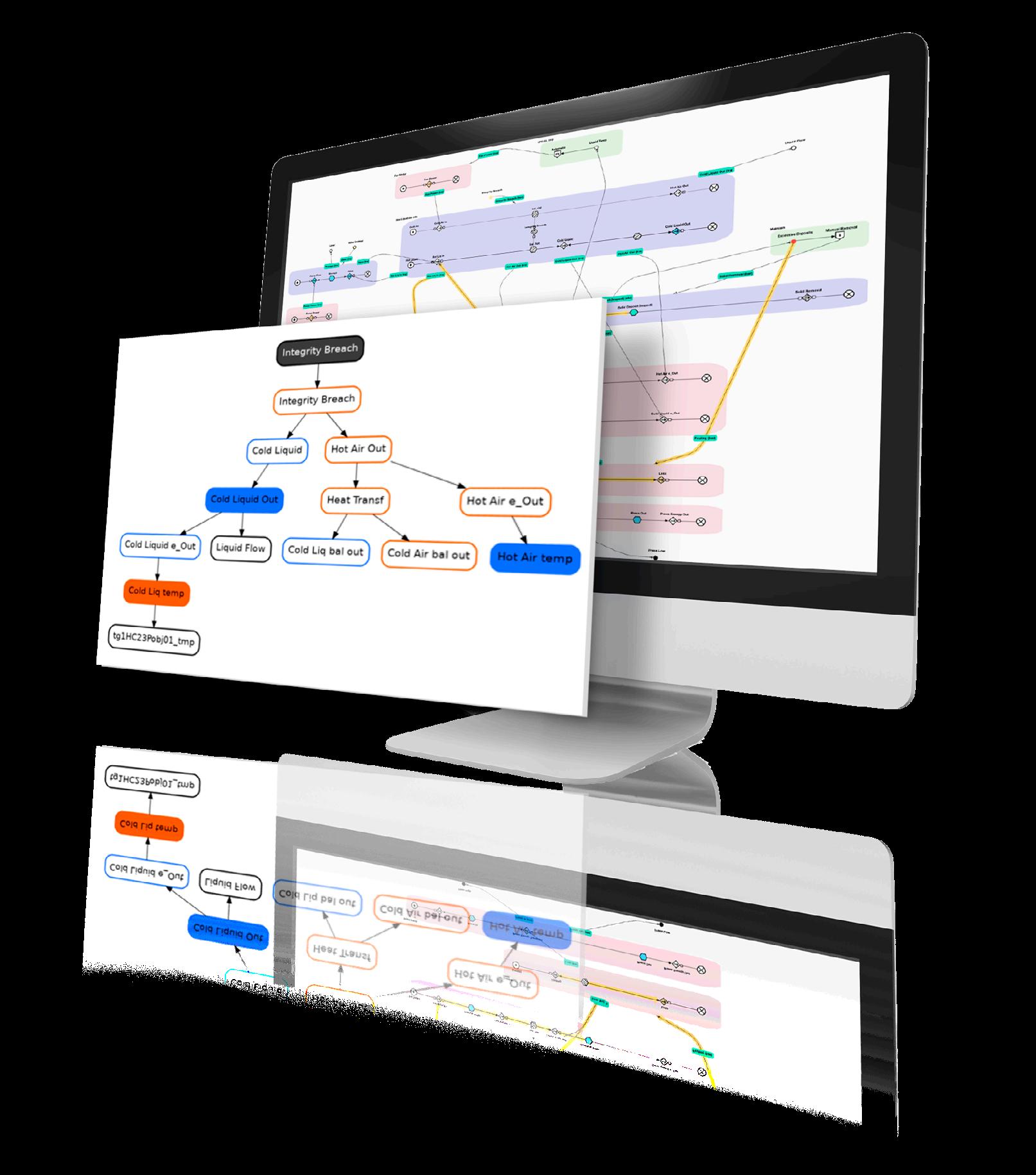
The traditional approach to HAZOP studies requires engineers to be fully focused on this task for up to eight hours. It’s an expectation that is difficult to achieve, increasing the risk of human error and can lead to
Shorter, more effective HAZOP workshops
A standard six-week HAZOP study often involves as many as 10 subject matter experts, and senior business leaders travelling to an asset every week – diverting strategic resources from daily operations, adding significant cost to the business, and increasing CO2 emissions.
By automating standard processes, the time required for HAZOP workshops can be shrunk, reducing the time commitment for senior team members. Workshops, facilitated by an independent consultant, can focus on more complex, high-risk processes.

Often, companies rely on one or two engineers who know the facility inside out to feed and help achieve the best HAZOP study. But, when they leave or retire, so does that knowledge. The digital HAZOP solution ensures that knowledge is retained.
What’s more, a digital HAZOP report becomes a live source of rich, safety and maintainability critical information. Instead of being filed away, it can be searched and easily updated during any upgrade or asset improvement work, making HAZOP's information "live".
Retaining critical safety information is just the first step for a digital HAZOP. It also generates enhanced process safety models by using xAI fed by the knowledge accumulated during the tool’s use. In this way, operators can create and test a more complete and precise model.
Vysus Group foresees a future where a wide net of safety information can help any operator and EPC to develop safer, more sustainable, and more reliable facilities globally. This tool could be the driver for that future.

Class actions have garnered significant media coverage in recent years with some of the world's biggest companies finding themselves embroiled in high value litigations around the world, with often hundreds or even thousands of claimants involved.
From accusations that Google took advantage of market dominance by shutting out competition on mobile search engines, to Mastercard being accused of unlawful conduct resulting in higher prices for consumers, and Apple taken to court for allegedly selling iPhones with defective batteries, high profile claims worth hundreds and even billions of pounds have often hit the headlines. Perhaps most famously, the Hollywood film Erin Brockovich brought the idea of class actions to audiences around the world.
In Scotland the ability to raise class actions (or group proceedings as they are known here) was only introduced in 2020. However, with the number of class actions rising rapidly around the world, what does this relatively new legal instrument mean for Scotland's energy sector?
What are class actions and who can bring them?
Class actions are claims where two or more parties collectively raise a claim in a single action. Those parties could be individuals or businesses but must have suffered a loss in the same or, at least, a similar way, caused by the business or individual they are raising the claim against. They are usually raised against large businesses, with claimants seeking financial payments for alleged wrongdoing.
In recent years, class actions have been raised covering a wide variety of matters including, amongst other things, actions raised by consumers for product defects
or misleading advertising, environmental claims, competition law claims and securities litigations, with the latter seeing a particular increase in recent months.
Class actions can either be brought by 'opt-in' procedure or 'opt-out' procedure, depending on the country in which the claim is being made.
What is the difference between 'opt-in' and 'opt-out' procedure?
For class actions brought under 'opt-out' procedure, all individuals and businesses who meet the relevant criteria to fit into that 'class' are automatically entitled to compensation if the claim is successful. They do not require to actively 'sign up' to the class action but can 'opt out' of receiving compensation. 'Opt-out' class actions are available in a number of countries such as the US, and in the UK for 'competition' claims.
In Scotland, actions can currently only be brought by way of 'opt-in' procedure which requires claimants to actively 'sign up' to be part of the claim. However, recent minutes from a March 2024 meeting of the Scottish Civil Justice Council suggest that further thought may be given to introducing 'opt-out' procedure in Scotland, with talk of a potential working group to discuss its introduction.
What impact would introducing 'opt out' procedure to Scotland have on Scotland's energy sector?
Simply put, the more claimants included in a class action, there is a likelihood the overall payout will be higher if successful. It is easy to see why, without the need to actively sign up, it is likely that 'opt out' procedure will result in larger claimant groups.
Moreover, obtaining funding for class actions is easier the higher the potential end payout. Bringing multiple claims as part of a class action allows for economies of scale, where each individual claim is often too small to be economically viable to pursue. As such, there is a risk that the introduction of 'opt-out' procedure in Scotland could entice litigation


funders and law firms to raise more class actions which would otherwise be difficult to pursue due to low engagement.
Accordingly, were 'opt out' procedure to be introduced into the Scottish legal framework, it is likely that we will see more funders moving into the Scottish market, who might look to coral claims on behalf of a larger class of claimants, who might not otherwise have either prosecuted their claims individually or even to have opted in to Group Proceedings as currently provided for. Those funders and those acting on their behalf would use the powerful 'opt out' procedure. They may well have Scotland's energy sector in their sights.
Some reports suggest that some plaintiff law firms are already gathering groups of small businesses (SMEs) together in preparation for potential class actions against energy companies arising out of what is alleged to be "secret commissions" paid to brokers for introducing SME's to energy companies. They may also have a keen eye on potential class actions on behalf of energy consumers, for example, where they believe they have been overcharged or where they believe their contracts have been breached as a result of service interruption. One could also envisage the 'opt out' procedure being used where downstream operations result in environmental issues.
Multi-million-pound claims remain a real risk for many businesses in Scotland under an 'opt in' procedure. Whilst the multi-billiondollar pay-outs that have been seen in the US may seem a world away, they would become closer with the introduction of an 'opt out' procedure in Scotland.
It is likely to be some time before any changes to the rules will be seen. In the meantime, we expect the momentum of group proceedings in Scotland continue to grow.

Brodies' on Apple Podcasts, Spotify or your usual podcast provider.



Leyton is an international consulting firm that helps businesses leverage financial nondilutive incentives to accelerate their growth and achieve long lasting performance.
We simplify your access to these complex incentives. Our combined teams of highly skilled Tax and Technical specialists, enhanced with cutting-edge digital tools developed internally, maximise the financial benefits for any type of businesses.
With compliance always front of mind, we have been delivering optimal services for our clients for over 24 years. This provides peace of mind that you will always receive the maximum benefit, without taking risks. The

The introduction of Industry 4.0 practices and technology has represented a massive shift in the ways that companies within the Oil & Gas sector undertake operational activity and treat the data that arrives off the back of these processes.
In essence, Industry 4.0 is the integration of smart technology into manufacturing to create interconnected, automated, and efficient production systems that are intelligent enough to feed directly into manufacturing and monitoring processes. Embracing smart technology, AI, cloud computing, and simulation technologies have allowed the introduction of more accurate metrical analysis and capture alongside the likes of automation – helping reduce the time spent on repetitive tasks and monotonous activity that can be carried out reliably and consistently by computing devices with applied intelligence. Although the adoption of such technology is a considerable task for an industry often rooted in historical and longstanding processes, the digital transformation process should not cease at the point of introducing software and hardware that enables the digitization to take place – true effectiveness comes from how best to utilize the data, automation, and insights that are derived.
Such is the focus for the European Commission’s next phase of industrial revolution – Industry 5.0. The purpose of 5.0 will be blending the advancements made possible through the adoption of smart machinery and computing with the expertise and creativity of workers themselves; allowing a harmonious relationship which leverages the objective power of objects and devices with the subjective interpretation and thought process of human beings. Although this initiative is in its infancy in a formal capacity, there is no reason why companies in the O&G sector need to wait for this to reach true fruition. The concepts are defined and the goals are set – the question is, how do companies take these and push forward their digital transformation process and potentially get ahead of the curve? Companies could consider how to better customize and personalize out-of-the-box software for their specific needs and drive further development of such tools in a way which resolves inherent limitations. Take, for example, a sensor-based
IoT solution which measures a single tank’s pressure for safety purposes – this could be extended to provide simultaneous multiple tank comparison and analysis, which can then be proactively interpreted by an engineer ahead of systematic issues on a rig. In more novel means, it could be the replacement of ‘dumb’ robot machinery carrying out repetitive processes to build components, and instead tandem operating ‘cobots’ (collaborative robots) with humans to build more intricate and granular components which address needs that can only be truly understood by a human brain. AI, ML, and scripted intelligence is inherently bias from historical data training and prompts – but through active simultaneous operation with workers, these bad habits can be remedied and build up a new skillset for the workforce as well.
The hot topic of digital transformation has been how to best utilize AI – and much of this conversation is focused and centered around the insular capabilities of generative technologies and how ready application of these can enhance a company’s operations. However, effective use cannot be truly understood until its outputs are measured, monitored, and applied in a way which enriches the workplace and does not seek to replace it or complicate it in a way that only benefits the systems and processes itself. Per S&P Global, ‘The oil industry has grappled with the persistent challenge of flawed data influencing AI outputs, giving weight to the principle of "garbage in, garbage out" in computer programming.’ and this will unlikely be an issue that can be resolved by the developers of such technology – but those using it in active practice. Industry wide, there is a considerable risk that initial positive results in using AI for a single purpose will be misleadingly understood as the final goal –driving forward the technology by questioning its application and understanding where the human factor still matters will be the ultimate net gain for its use.
The origins of Industry 5.0 in a formal capacity set by the European Commission are still in active motion; but the Oil & Gas sector needn’t standstill in its digital transformation process, as the best uses of collaborative human and machinery will come from practice and application which can be initiated in the present.



Your partner in the energy transition
Optimizing the performance of your offshore wind assets to generate and transmit clean power efficiently and sustainably.

Awards showcase the cutting-edge excellence that drives Scotland’s world-leading renewables industry. Nine winners from across Scotland: Aberdeen, Shetland, Montrose, Stirling, Falkirk, Edinburgh and Glasgow
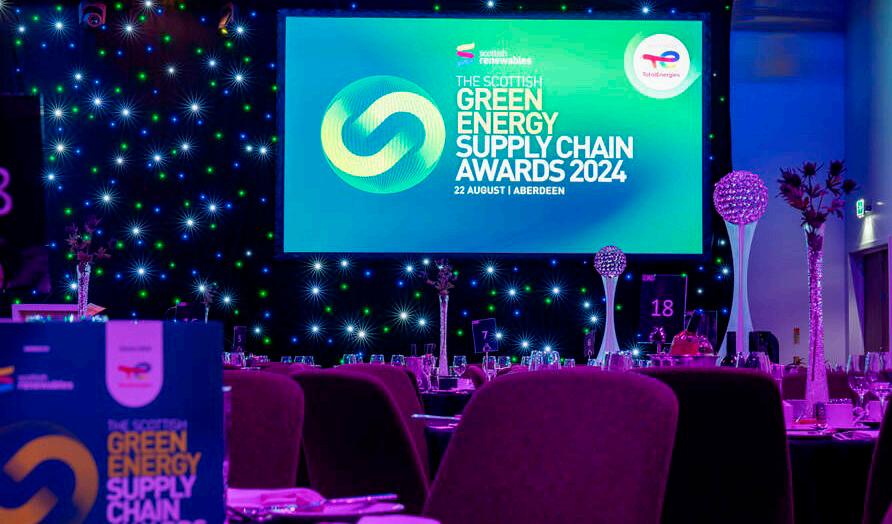
Organised by trade body Scottish Renewables, the awards highlight the innovation, commitment and leadership within Scotland's renewable energy supply chain.
From a shortlist of 44 finalists, this year's winners are at the cutting-edge of excellence that drives Scotland’s world-leading renewable energy industry.
Winners included:
Verlume, a world leader in subsea energy management and energy storage technology, took home the Outstanding SME Award.
Renewable Parts, who refurbish, repurpose and recirculate wind turbine components, received the Green Energy Skills Award for its leadership in training the next generation of
energy professionals, offering apprenticeships and work experience to nurture young talent.
Cairn Risk, a risk and safety management specialist, was recognised with the Green Business Growth Award for its ambitious local and international expansion which has seen more than 20 people employed across the UK, 90+ projects secured worth £4.5 million and operations extended to 13 countries across six continents.
Peterson Energy Logistics, a world-leading energy logistics company, took home the Technology & Business Innovation Award for its 'Lighthouse' software, which has revolutionised the logistics supply chain, delivering significant cost savings and reducing CO2 emissions by 8,915 tonnes.

Fred. Olsen Renewables, a developer, owner, and operator in renewable energy, was the winner of the Supply Chain Development Award for maximising Scottish content in renewable projects, securing £920 million in contracts and creating 866 jobs.
Michael Shanks MP, Parliamentary UnderSecretary of State, Department for Energy Security and Net-Zero, delivered a keynote address emphasising Scotland’s crucial role in materialising the UK government’s ambition for renewable energy and driving progress towards the UK’s climate goals.
Claire Mack, Chief Executive of Scottish Renewables, said:
“The Scottish Green Energy Supply Chain Awards are proud to support the nimble, agile, ambitious and innovative businesses, organisations and SMEs undaunted by the opportunity to deliver our new energy system.
“Hundreds of supply chain businesses are bringing their expertise across to the renewable energy industry while pushing new skills initiatives to grow, recruit and retain the people we will need in the future.
“The supply chain is a critical part of the vision we have for Scotland and the UK and I have been truly blown away by the ground-breaking work of this year’s finalists.
“Congratulations go to all off this year’s nominees, and of course the winners.”
This year’s Scottish Green Energy Supply Chain Awards were headline-sponsored by TotalEnergies.
The full list of winners is as follows:
• Diversity and Culture Award: RES
• Green Energy Skills Award, sponsored by OPITO: Renewable Parts
• Green Business Growth Award: Cairn Risk
• Sustainable Supplier Award: ECO Hire Ltd
• Supply Chain Development Award, sponsored by Green Man Consulting Ltd: Fred. Olsen Renewables
• Best Practice Award, sponsored by Coast Offshore: Montrose Port Authority
• Outstanding SME Award, sponsored by Scottish Enterprise: Verlume
• Technology & Business Innovation Award, sponsored by Aspect: Peterson Energy Logistics
• Collaboration in Action Award: Offshore Wind O&M Partnership


UK Oil & Gas PLC has conditionally raised gross proceeds of £1 million to develop further its hydrogen gas storage projects in Dorset and Yorkshire.
Priced at 0.05p, the issue was a 37% discount on Friday's closing price.
Existing retail shareholders will also be offered new shares on the same terms as the placing.
Both parts of the funding require shareholder approval to go ahead.
The company has successfully assessed the technical feasibility of the Trudvang, Luna and Havstjerne CCS projects, which combined can store up to 21 million tonnes of CO2 annually, the equivalent of nearly half of Norway’s total CO2 emissions in 2023 (46.6 million tonnes).
Wood’s comprehensive techno-economic assessments – the method for evaluating the economic performance of technology –have laid the groundwork for sustainable CO2 transportation solutions, enabling the projects to progress to the next stage of development. The assessment included cutting-edge flow assurance simulations, development of CO2 specifications, specialised subsea field layouts and innovative marine loading and offloading solutions.
Azad Hessamodini, Executive President of Consulting at Wood, said: “I am incredibly proud of our advisory team's dedication and expertise, which have been instrumental in driving these projects forward. Our longstanding presence in the North Sea, combined with the strategic scopes of work we have
secured in the Norwegian Continental Shelf, underscore our commitment to bringing investible and scalable decarbonisation solution to the region. We are honoured to support Norway in its journey towards a low carbon future.”
The CCS licenses are owned by Sval, Storegga and Vår Energi (Trudvang), Wintershall Dea and Total (Luna) and Wintershall Dea and Altera (Havstjerne). Wood’s technical experts from Stavanger, Sandefjord, Galway, Aberdeen and Reading are working together to deliver these scopes.
With over 30 years of experience in CCS and more than 200 global carbon capture studies delivered, Wood has a proven track record of executing CCS Solutions across the value chain, from capture to injection. Our knowledge and implementation expertise position us as a trusted partner in the global effort to reduce carbon emissions.
Wood will be exhibiting at this year’s ONS conference in Stavanger on the 26th – 29th of August on stand 8350 (Hall 8).
Specifically, UKOG said the new money would allow it to initiate essential new studies as part of its applications for government Revenue Support in the first hydrogen storage allocation round and Development Consent Orders under the Nationally Significant Infrastructure Project planning regime.
Money raised would also allow it to negotiate further with prospective strategic joint venture partners and conclude a land option agreement for a further hydrogen storage site.
Stephen Sanderson UKOG's chief executive commented: "The funding, together with the support from leading UK energy and hydrogen-space infrastructure players, RWE, Sumitomo and SGN, means we can now materially advance our nationally significant projects towards the goal of a competitive Revenue Support application.
It will also greatly help us to secure at least one major strategic partner as a joint venture participant and to enhance our lobbying efforts with our new Labour government."



Infinity Partnership is an award-winning, multi-disciplinary accountancy and business advisory practice, with a proactive approach to customer service.
Infinity has been a five-time winner at the British Accountancy Awards and has been a three-time finalist at the Scottish Accountancy Awards in recent times. Infinity Partnership: Your Partner in Business
CHC Helicopter, the global helicopter services company specialising in transportation and search and rescue operations, is delighted to announce it has secured a new contract with RWE Renewables to support the development of its Sofia Offshore Wind Farm in the North Sea.

In total, 100 turbines will be installed at the site on Dogger Bank, 195km from the nearest point on the North-East coast of the UK. Sofia Offshore Wind Farm is one of the first projects in the world to use Siemens Gamesa Renewable Energies’ state-of-the-art 14MW wind turbines. When operational, the wind farm will save more than 2.5 million tonnes of carbon emissions per year compared to the use of fossil fuels in the UK. The project is expected to be completed in 2026. The contract



is a milestone for RWE as it is the first time they have contracted a helicopter service during the construction phase of an offshore wind farm project.
CHC will operate an AW139 to provide crew change support for the development of Sofia, with the first flights commencing from its Norwich base in September 2024. The contract strengthens CHC’s position as a trusted partner to the offshore wind sector.
The operator is presently providing crew transportation services for the construction of the Dogger Bank Offshore Wind Farm, a joint venture partnership between SSE Renewables, Equinor and Vårgrønn. And since 2017, CHC has provided crew transportation support to Ørsted’s Hornsea 1 and 2, the largest offshore wind farms globally, until Dogger Bank’s completion. Dave Grant, Commercial Director, EMEA, said: “We are proud to be selected as the aviation partner for the construction of Sofia Offshore Wind Farm.
This project reflects our continued support for the development of sustainable energy sources and our reputation for exceptional safety standards and operational excellence. The team look forward to building our relationship with RWE Renewables and supporting their success” Jonathan Grigg, Senior Project Manager, RWE Sofia Offshore Wind Farm, said: “We’re delighted to have secured CHC’s services for the Sofia project.
Sofia’s distance from shore means that we need a first class helicopter service, and CHC demonstrated throughout our search that they have the right capabilities and ethos to partner with us. We look forward to welcoming them onto the project.” CHC’s focus on safety, reliability and the development of sustainable best practices were key factors contributing to the award of this contract.
The company has played a critical role in the development of a number of offshore wind farms across the globe and this latest contract underscores the operator’s enduring success in the sector.
This contract encompasses a wide range of energy sectors, including oil, gas, and new energy initiatives.
Kent will support the portfolio with its highly experienced CSU workforce while implementing its commissioning processes, systems, and tools throughout the programme of works, including its custombuilt CommissionabilityTM software.
This strategic contract will seek to support Shell in its desire to improve performance metrics by eliminating outcome variability related to commissioning readiness and execution while optimising the start-up schedule and reliability of new facilities.
Tush Doshi, Chief Operating Officer at Kent, said: "We are immensely proud to have been selected by Shell for this prestigious contract. This is not only a testament to our confidence in our exceptional commissioning capabilities but also underscores the trust we have cultivated with Shell. We are excited about the opportunities this contract presents and are committed to setting new benchmarks in commissioning excellence. This collaboration will undoubtedly enhance our mutual goals for operational success and innovation."
U.S.-based subsea services and technology firm Oceaneering International has secured an Inspection, Maintenance, and Repair (IMR) support services contract with Aker BP for work on the Norwegian Continental Shelf.

The initial contract duration is for three years with two, two-year options to extend.
Oceaneering will mobilize in August to provide onshore and offshore IMR project support to vessels contracted by Aker BP operating on the Norwegian Continental Shelf.
“Being awarded the IMR support services contract from Aker BP is a significant achievement. It enables us to leverage our advanced product and service portfolio to deliver a cost-effective solution with a reduced carbon footprint and minimized HSE risk,” said Eli Løberg Mellgren, Director of Oceaneering’s Offshore Projects Group, Europe and the Middle East (EME).
SBM Offshore is pleased to announce that it has signed a contract with Woodside Petróleo Operaciones de México, S. de R.L. de C.V. (“Woodside”), operator of the Trion deepwater oil field development located in the Perdido Belt of the western Gulf of Mexico. Under this contract, SBM Offshore will construct and thereafter lease to Woodside a Floating Storage and Offloading (“FSO”) unit for a period of 20 years. This award complements the Transportation & Installation contract for the FSO and the FPU awarded to SBM Offshore in 2023.
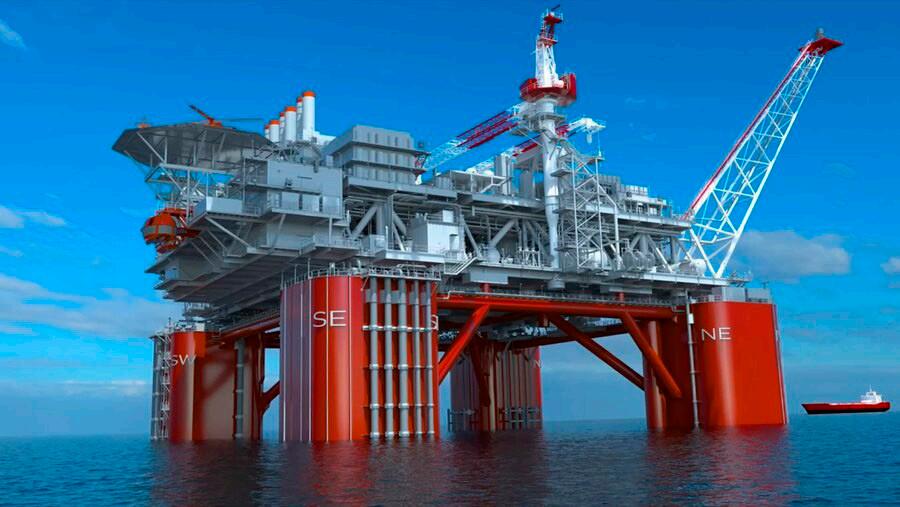
The new build FSO, based on a Suezmax-type hull, will be equipped with a Disconnectable Turret Mooring (“DTM”) system designed by SBM Offshore. The FSO will be moored in water depth of about 2,500 meters and will be able to store around 950,000 barrels of crude oil.
The Trion field is located 180 km off the Mexican coastline and 30 km south of the US/Mexico maritime border. The Trion project is an alliance between Woodside (60%, Operator) and PEMEX Exploración y Producción (40%, non-Operator).
ASCO brings decom expertise
with significant contract
UK-headquartered logistics and materials management company, ASCO, has completed a six-figure contract with Onslow Marine Support Base (OMSB) in Western Australia, supporting the offshore decommissioning sector, in particular utilising its radiation expertise.

As part of the contract, ASCO mobilised two radiation safety officers (RSOs) as well as NORM (Naturally Occurring Radioactive Material) and mercury monitoring and analysis equipment to the OMSB site.
The RSOs delivered on-site training for NORM awareness, and monitoring for various hazards such as benzene, H2S (hydrogen sulphide) with a particular focus on NORM and mercury.
The project was led by senior RSOs John Davidson and Robin Small, who together boast 25 years of expertise in the field. The RSOs helped to optimise the site, ensuring that supervised areas were set up correctly and any contaminated materials were properly managed and contained. The team enhanced OMSB's management plans and risk assessments, ensuring top-tier radiation management and site safety operations.
OMSB chief operating officer, Andre Veder commented: “At OMSB we believe all parts of the supply chain supporting the offshore decommissioning sector requires a robust focus on safety, efficiency and compliance. As part of this, OMSB proactively holds a range of licences including a radiation licence and associated management plan. "

Subsea7 announces the award of a sizeable(1) contract in the US Gulf of Mexico.
The scope of work includes engineering, procurement, construction, and offshore installation of a water injection flowline, hull piping, and associated subsea infrastructure.
Project management and engineering work will start immediately at Subsea7’s office in Houston, Texas, and offshore activity is expected to begin in 2026.
(1) Subsea 7 defines a sizeable contract as being between $50 million and $150 million.



www.wellsafesolutions.com
The complete package for well decommissioning
Well-Safe Solutions provides a ground-breaking approach to the safe and cost-efficient decommissioning of on and offshore wells. We offer a specialist well abandonment service that allows operators to meet the challenges and regulatory imperatives around decommissioning, while significantly reducing costs.
Aberdeen-based decommissioning services provider WellSafe Solutions has hit a new saturation diving milestone in the UK waters with one of its rigs, which is said to be the only semi-submersible in the North Sea with saturation dive spread capability.

After buying the Ocean Guardian semi-submersible rig from Diamond Offshore in 2019 to convert it into a bespoke plug and abandonment (P&A) unit, the Aberdeen-based player changed the rig’s name to WellSafe Guardian, modernized, refurbished, and reconfigured it exclusively for P&A scopes.
These upgrades enabled it to score a 14-well decommissioning contract with Repsol Sinopec Resources UK for the Hannay and Buchan fields in September 2021. The following month, Well-Safe won an assignment with CNR International to decommission up to 14 more wells on the Banff and Kyle fields in the UK Central North Sea.
Fitted with a D300 saturation dive system and Trendsetter Engineering’s Trident modular intervention technology, the rig is perceived to be the right fit for well P&A activity on aging or fragile wells.
The Well-Safe Guardian rig completed the first saturation dives in WellSafe Solutions’ history last year while working on Repsol Sinopec’s second phase of well decommissioning at the Buchan and Hannay fields in the North Sea.

According to the UK’s decommissioning services provider, diving works have been completed on the rig’s maiden project with the saturation dive system, following 163 operational dives across three drill centers and nine wells.
Well-Safe Solutions highlighted: “This fast-growing track record demonstrates the experience and tenacity of the Well-Safe Solutions team, our client, and close collaboration with RockSalt Subsea Ltd and Fugro as key partners.
“With uptime of 96% over the final three wells in this project, we saw incredible performance delivery on the final batch of legacy, dual-bore Xmas trees building on the high reliability of our diving system.”
These 163 dives enabled the completion of work scopes related to the general visual inspection of subsea dual-bore trees, removal of aged control systems and replacement with new tree control panels, installation of new hydraulic lines with pressure-testing of function and safety valves, barrier testing and remedial works to address any integrity issues, installation of tree connector override system, and removal of manual tree cap lockdown screws.
While emphasizing that this solution is “an alternative to traditional subsea well decommissioning approaches in the North Sea,” the company underlined the Well-Safe Guardian rig’s “market-leading role” in the decommissioning of fragile and aged wellheads and trees, since the rig is portrayed as the North Sea’s only semi-submersible with saturation dive capability.
“The Guardian is now latched onto the wells with Trendsetter Engineering, Inc.’s Trident intervention system, enabling safe, secure decommissioning operations to conclude later in 2024. […] Congratulations to everyone involved with the Well-Safe Guardian for this fantastic proof-of-concept of the saturation dive system,” emphasized the Aberdeen-based firm.
The Well-Safe Guardian Earl & Wright 700 series midwater semisubmersible rig is believed to be well-suited for interfacing with older wellheads and trees since it comes with the Trendsetter Trident modular intervention system, which is a single-system solution that can be configured for hydraulic intervention, riserless light well intervention, and open water intervention riser operations.
Last year, Well-Safe Solutions got a global master agreement with BP for well engineering and decommissioning support services, alongside a deal with Spirit Energy to expand the existing scope for the Well-Safe Defender semi-submersible rig with another well.
In addition, the Scottish decommissioning player decided to dip its toes into carbon capture, utilization, and storage (CCUS) projects.
new decommissioning news available @ https://www.ogv.energy/news/decommissioning




The United Kingdom offshore decommissioning market is estimated to be valued at US$ 1.30 Bn in 2023, growing at a CAGR of 8.5% during the forecast period 2024-2031, as highlighted in a new report published by CoherentMI.

Companies overviewed in this report such as Acteon Group Limited, Topicus Finan BV, Tetra Technologies Inc., Allseas Group S.A., DeepOcean Group Holding B.V., John Wood Group Plc, Exxon Mobil Corporation, Veolia Environnement S.A., Derrick Services (UK) Ltd., Perenco SA, Ramboll Group A/S, and AF Gruppen ASA.
United Kingdom Offshore Decommissioning Market is estimated to value at US$ 1.30 Billion in the year 2024, and is anticipated to reach a US$ 2.40 Billion by 2031, with growing at a CAGR of 8.5% during forecast period 20242031. With majority of the UK continental shelf oil and gas infrastructure reaching end of operational life in the coming years, there will be substantial decommissioning activity in the UK North Sea region. A significant number of platforms, pipelines and other structures installed in the 1960s-70s are coming towards the end of their productive lifespan. The growing inventory of ageing assets requiring decommissioning works is a major driver fueling growth of the UK offshore decommissioning market.
A new offshore decommissioning base is being established at the Port of Sunderland by County Durham firm Northern Metal Recycling.
The Shildon business already runs a 15 acre site at Hackworth Industrial Park where it specialises in the collection and removal of ferrous and non-ferrous scrap metals, and says its new agreement with the Wear port will allow it to tap into large scale decommissioning projects from the North Sea. Its new hub will make use of 540 metres of deep-water berths at Corporation and Greenwells Quays, on the west and east sides of the port respectively, and heavy lift cranes.
Bosses at the Port and Northern Metal Recycling point to the opportunity that lies in decommissioning work, which is valued by the North Sea Transition Authority as £2.5bn per year over the next 20 years. The new hub is the latest in
The growth of the UK offshore decommissioning market is attributed to ageing offshore oil and gas infrastructure and stringent government regulations regarding decommissioning of offshore assets. Many offshore platforms and pipelines installed decades ago have already outlived their design lives and are nearing the end of production. According to Oil & Gas UK, around 50 platforms in the UK North Sea need to be decommissioned by 2025. This presents significant opportunities for contractors engaged in dismantling and removal works. Moreover, regulations such as the Petroleum Act 1998 and OSPAR Decision 98/3 make operators fully responsible for environmental remediation and prevent pollution from offshore installations being abandoned. Non-compliance can lead to heavy penalties, thereby driving increased spending on decommissioning activities.
Rise in complex heavy lifting projects: With numerous large platforms and modules reaching the end of their lifecycle, there is growing demand for specialized heavy lifting and marine operations. For example, in 2023-24 complex projects such as the deepwater Leviathan and Tyra platforms in Denmark and Mariner field in UK are scheduled for removal.
Advanced engineering solutions: To safely and costeffectively dismantle huge offshore infrastructures, contractors are increasingly adopting innovative engineering technologies such as modular lifting, simultaneous operations, hydraulic shears and mega-lifts. For instance, use of floating heavy lift vessels capable of lifting 10,000 tons is transforming heavy lifting capacity in the industry.
In November 2022, there were more than 2,000 abandoned oil and gas wells in the North Sea, and the high number of abandoned wells is expected to lead to an increase in activity as operations worth US$ 21.72 billion are decommissioned and shut down. The research was conducted by industry, Offshore Energies UK (OEUK), formerly Oil & Gas UK, which provides fresh insight into petroleum decommissioning efforts..

recycling activity at the Port, where Norwegian tyre recycling firm Wastefront is developing a major facility that aims to process about 80,000 tonnes per year of end-of-life car and truck tyres.
Jordan Bell, managing director of Northern Metal Recycling, said: “There is huge demand for the decommissioning of oil and gas apparatus and equipment and Port of Sunderland is perfectly placed to capitalise on this. By teaming up with the port, we will not only benefit from utilising its deep-water berths and leading-edge handling equipment, but we will also be able to take on significantly larger projects. It will open up so many new avenues for the business.”


STATS &
PROVIDED BY
Offshore O&G-related EPC contract award value year-to-date is estimated at US$32bn (excluding letters of intent), of which contracting activities in the last 30 days were headlined by the announcement from OneSubsea for the supply of Petrobras' standardized, presalt subsea production systems and related services for the Brazilian NOC's Atapu and Sepia phase II development in the Santos Basin offshore Brazil. OneSubsea will provide the vertical trees, subsea distribution units, subsea control systems and pipeline systems, and related installation, commissioning and life-of-field services.
In the US GoM, BP announced that it had taken FID at its Kaskida development 2Q 2024 and that the project will have a production capacity of up to 80kbpd. To remind, Seatrium was issued a Letter of Intent (LoI) for the project's FPSS unit in June 2024, with TechnipFMC identified as the frontrunner to supply the subsea production systems for the project. Meanwhile, Energean announced it had taken FID at its Katlan development, comprising the Athena and Zeus fields offshore Israel. The project will be developed in a phased approach through a subsea tieback to the Energean Power FPSO unit installed on its Karish field. TechnipFMC confirmed the project's integrated EPCI contract award. Offshore Trinidad & Tobago, Shell sanctioned its Manatee gas development project, for which McDermott was awarded the EPCI work scope for the fixed platform and a 32-inch gas export pipeline.
Other key contracts recorded during the period under review included the EPCI award to Saipem for Saudi Aramco’s CRPO 132 and 139 work scope. The work scope of CRPO 132 involves the EPCI of three new oil and gas production deck modules, subsea pipelines and power cables for the Marjan field, whilst the work scope of CRPO 139 reportedly includes work on three offshore decks, five PDMs and multiple segments of subsea pipelines and cables for the Zuluf field.
Looking forward, Westwood forecasts an additional US$31bn of offshore O&Grelated EPC spend for the remainder of 2024, driven by c.125 subsea tree unit awards, c.2,200km of subsea umbilicals, risers and flowlines (SURF), c.1,500km of pipelines, 55 fixed platforms and 10 floating production units, of which five will be an upgrade/ redeployment of existing units.
The global committed jackup count further dropped to 408 units in July. Marketed available and cold-stacked jackup counts now stand at 35 and 56 respectively, with marketed committed utilisation and total utilisation at 92% and 82%, respectively. During the month, a total of 16 contracts were awarded, amounting to 8,995 days (24.6 rig years) of backlog added. Valaris 144 will be drilling one more well for Azule Energy in Angola, before its 13-well contract with the operator. The 45-day campaign will commence in 1Q 2025 at an estimated contract value of US$8.5mn.
The global committed semisubmersible count sustained at 65, with 13 available and 12 cold-stacked rigs remaining in the fleet. During the month, marketed committed and total utilisation remained at 83% and 72%, respectively. Oil India firmed up a contract for Blackford Dolphin lasting 14 months firm with a seven-month option also available. The rig will be drilling exploration wells in the Andaman blocks with commencement in September.
Finally, the global drillship count stands at 81 units during the month, leaving nine marketed rigs available plus 14 cold-stacked units. Marketed and total committed utilisation dropped to 90% and 78%, respectively. BP awarded a 1,095-day contract to Deepwater Invictus with expected commencement in 1Q 2025. The rig will likely be drilling development wells for the Kaskisa field in US Gulf and will remain engaged with the operator till end 2027.
A total of 53 turbines have been awarded since the last update. To date, a total of 455 turbines have been awarded globally (excluding Mainland China) in 2024. The 53 turbines are associated with the firm contract that was awarded to Vestas at the 795MW OranjeWind wind farm, located offshore the Netherlands. Under the contract, Vestas will supply its V236-15 MW turbines, and the contract includes a five-year service agreement followed by a long-term operational support agreement. The contract award followed the announcement that FID was taken on the project. OranjeWind will be jointly developed by RWE and TotalEnergies, with TotalEnergies signing agreements to acquire a 50% stake in the wind farm.
Dominating headlines was news that the UK government has increased the budget for the Contracts for Difference (CfD) Allocation Round 6 (AR6). The overall budget has increased to £1.56bn (US$2bn) up from £800mn (US$1mn) which was the original amount that was set. £1.1bn (US$1.4bn) of this has been allocated for offshore wind. The winning projects are expected to be announced by the end of 3Q 2024.
Finally, Taiwan's Ministry of Economic Affairs (MOEA) has announced the winners of the Round 3 Phase 2 lease auction. A total of five projects have been selected, these have a combined capacity of 2.7GW and with administrative contracts targeted to be signed by November 2024. The developers of these projects include Shinfox, Synera Renewable Energy (SRE) Copenhagen Infrastructure Partners (CIP), a joint venture of Corio and TotalEnergies, and Enervest.

Westwood Global Energy Group
are specialist providers of detailed market intelligence for the offshore energy sector, covering; offshore rigs, production facilities, subsea equipment, subsea services, offshore marine and offshore renewables and power.
www.westwoodenergy.com








Onshore Wind Energy 2024
3-4 September 2024
EICC, Edinburgh
RE+
9-12 September 2024
Anaheim, USA
ESS Expo
11-12 September 2024
Birmingham, United Kingdom
Oil & Gas Indonesia
11 September 2024
Jakarta, Indonesia
Gastech
17-20 September 2024
George R Brown Convention Center | Houston
Wellsite Innovation Summit
17 September 2024
Houston, Texas, USA
Solar & Storage Live Zurich
17-18 September 2024
Zurich, Switzerland
IAA Transportation 2024
17-22 September 2024
Hanover, Germany
Wind Energy Hamburg










Travel management for the energy sector presents unique challenges, especially when it comes to arranging travel to offshore rigs and remote locations.
These journeys require meticulous planning, extensive risk management, and a deep understanding of the logistical complexities involved. This article explores the critical aspects of managing travel to these challenging destinations and how ATPI Energy Travel excels in providing seamless solutions.
Travelling to offshore rigs and remote locations in the energy sector involves navigating a series of logistical and safety challenges:
• Complex Itineraries: Coordinating multiple flights, helicopter transfers, and sea transport requires precision and flexibility.
• High-Risk Destinations: Many remote locations are in volatile regions, necessitating thorough risk assessments and robust safety protocols.
• Crew Changes and Rotations: Ensuring smooth and timely crew changes is essential to maintaining operational efficiency and meeting legal requirements.
• Health and Safety: Travellers must be prepared for harsh environments and potential health risks associated with remote locations.
ATPI Energy Travel offers specialised services designed to address the unique needs of travel to offshore rigs and remote locations. Here’s how we manage these complex journeys:
• Detailed Itinerary Planning: We coordinate every aspect of travel, from initial flights to final transfers, ensuring seamless transitions and minimising downtime.
Energy. Our comprehensive safety and risk management services include:
• Travel Risk Assessments: We evaluate potential risks associated with each destination and provide detailed safety plans to mitigate these risks.
• Emergency Response Services: Our emergency response team is equipped to handle medical evacuations, crisis management, and other urgent situations.
• Health and Safety Protocols: We ensure all travel arrangements comply with health and safety regulations, providing peace of mind for both travellers and employers.
Effective cost management is crucial for travel to remote locations. ATPI Energy offers several strategies to control and reduce travel expenses:
• Negotiating Special Rates: We leverage our industry connections to secure special rates with airlines, hotels, and other service providers.
• Budgeting Tools: Our detailed budgeting and reporting tools help clients track and manage travel expenses, ensuring transparency and control.
• Optimising Travel Routes: We plan efficient travel routes to minimise costs and reduce the environmental impact of travel.
ATPI Energy Travel utilises advanced technology to enhance the travel experience and streamline travel management processes:
• Travel Management Systems: Our stateof-the-art systems provide real-time data, streamline booking processes, and ensure seamless coordination of travel plans.
24-27 September 2024Hamburg, Germany
24-27 September 2024Hamburg, Germany
Uganda International Oil and Gas Summit 2024
24-25 September
Uganda
Remtech Expo
25-27 September 2024
Ferrara, Italy




• Expertise in High-Risk Regions: Our team conducts comprehensive risk assessments and provides tailored advice to ensure traveller safety in volatile regions.
• Efficient Crew Changes: We manage the logistics of crew rotations, ensuring personnel are transported efficiently and safely to their destinations.
24/7 Support: Our round-the-clock assistance ensures travellers have access to support and can make changes to their plans at any time.
Ensuring the safety of travellers to remote and high-risk locations is a top priority for ATPI

• Mobile Solutions: Our mobile apps allow travellers to manage their itineraries, receive updates, and access support services on the go.
Managing travel to offshore rigs and remote locations in the energy travel sector requires specialised expertise and meticulous planning. ATPI’s comprehensive services ensure that these complex journeys are handled efficiently, safely, and cost-effectively. If your company faces the challenges of remote location travel, contact ATPI today to learn how we can support your travel needs with our expert solutions.
If you would like to find out how ATPI can help streamline your travel management, email: atpienergytravel@atpi.com




As the leading innovator, we are your competent partner to support you in the challenges brought on by the energy transition. Our technical expertise and a data pool of 40 years’ experience in pipeline industry allow for the best integrity and risk assessments when it comes to introducing future fuels into your asset base. We are at your side for your continued success in a sustainable future. hydrogen.rosen-group.com






































